

An introduction to children and the great outdoors
Outdoor play is key
Everyone loves the great outdoors. Children love playing in nature’s playground. They love gloriously muddy outdoor adventures. They love to explore further than the eye can see. They love to discover wildlife as they go. Connecting with nature is key to creativity and curiosity. Key findings agree. A recent Government poll found that 95% of children enjoyed learning outdoors rather than indoors.
There are hundreds of benefits to learning outside the classroom. Here are just a few:
93%
of schools believe outdoor learning improves social skills
92%
of schools found a pupil’s overall health and wellbeing also increased
79%
of teachers felt that a lesson outside had a positive impact on their teaching methods
85%
of schools experience a positive improvement in general behaviour thanks to lesson being held outdoors
But while this kind of learning experience is fantastic for development, schools might be puzzled as to how they can give their students the best outdoor learning experience. After all, there’s so many amazing ways to connect with nature and the world around us. Knowing what works best is difficult.
Environmental charity Syvla think that specialist Forest Schools are best. Their handy report showed that as many as 30% of kids doing outdoor activities enrolled in some kind of Forest School program:
30%
Forest Schools
26%
Outdoor classroom lessons
20%
One-day field-trips
18%
Residential trips
6%
Other activities
85% of schools involved in the report have an area within their grounds that they’re using for forest schooling. For those schools who don’t have an area on site, 60% only had to travel one mile to reach an area for forest schooling.
If you want proof of just how much kids love nature, simply ask. A 2021 poll showed just how engaging young people found the natural world to be. Some of their favourite things to do were:
47%
Relaxing outside where it’s quiet
46%
Having the chance to exercise
39%
Playing and having fun
31%
Looking at wildlife and nature
29%
Adventuring, exploring, or doing something new
27%
Meeting or playing with people who live nearby
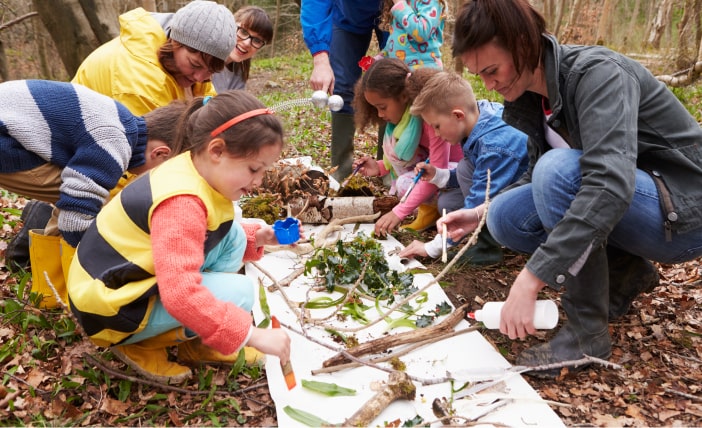
Of the schools they surveyed, they found as many as 85% have a site on their ground specifically tailored to Forest Schooling.
The benefits of nature for kids
Nature is good for us. It’s good for us mentally and physically. Getting back to nature allows us the chance to relax and reconnect with the wider world around us. And while time spent outside is good for everyone, it’s most important in the development of children. Here’s just some of the benefits to spending time outside for children:

Confidence
Embracing the majestic world around them, with fewer restrictions on what they can or can’t do, gives kids the chance to take control over their own actions. This will empower them with a sense of confidence, and teaches them how to play safely.
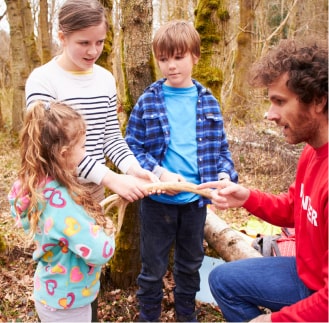
Responsibility
Giving a child the job of caring for a living organism like a plant helps to teach them the importance of caring for another being. It’s their job to remember to tend to the plant, as well as to regularly water and even prune it if it really begins to sprout up.
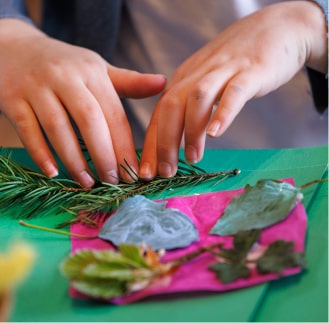
Creativity
The unstructured way that kids play outside allows their minds to run wild. A stick becomes a sword, a toppled tree is a pirate ship, and a stump doubles for a fancy banquet table. Their inventive side is sure to spring to life in a natural environment.
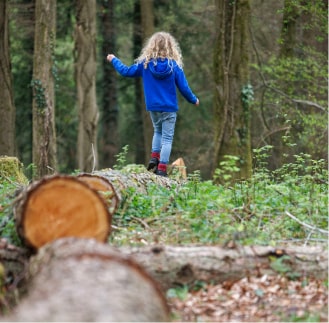
Exercise
While they might not notice it, playing outside is a great form of exercise for a child. They’ll have plenty of room to run around in, as well as climbing, hiking, and generally exploring. What’s more, it can be a lot easier to convince them to play outside than getting them on the treadmill.
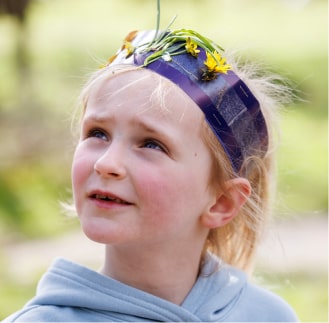
Stimulation
Much like adults, kids need to have some form of mental and physical stimulation to keep them happy. The ever-changing nature of the great outdoors provides this, helping to keep mind, body, and soul active and content.
Ways for a child to explore nature
There are loads of different ways to let a child explore and engage with nature. If you’re thinking about how best to immerse a child in the world around them, keep these fun and fantastic ideas in mind:
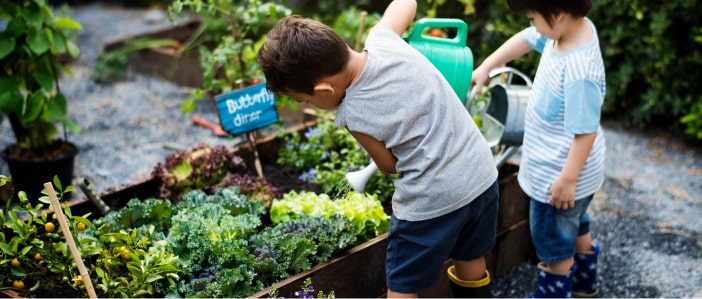
Planting a garden
Planting, nurturing, and one day seeing a plant flourish and bloom is a great way to encourage a child to get outside. Seeing tiny seeds turning into a beautiful flower or healthy vegetable can be really rewarding.
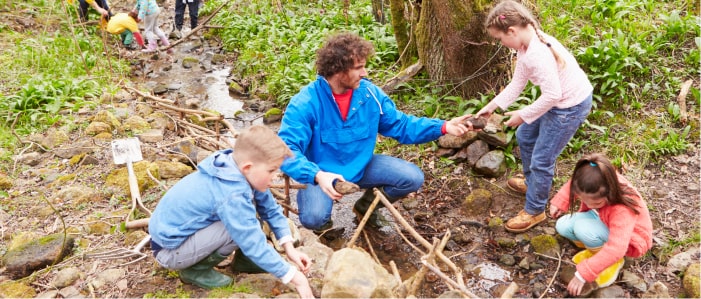
Enrolling in a forest school
Forest schools are growing in popularity all the time. That’s because they’re a great way to give your child the gentle nudge they need to explore more of nature. These groups give structured classes, which teach children real-world lessons and morals, all while digging deep and having immense fun outside.
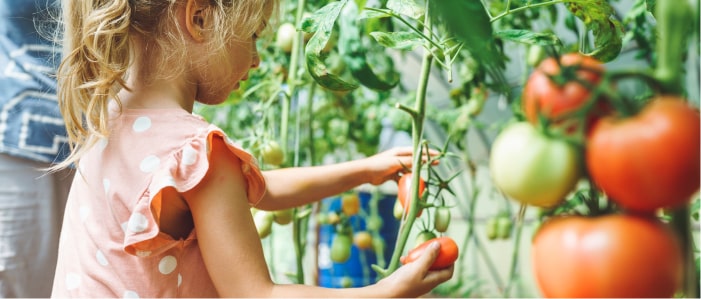
Going fruit and vegetable picking
This isn’t just a great way to get outside, but will also give a child a new appreciation for where their food comes from. This could encourage them to eat the veggies which they sometimes leave on their plates at the end of dinner.
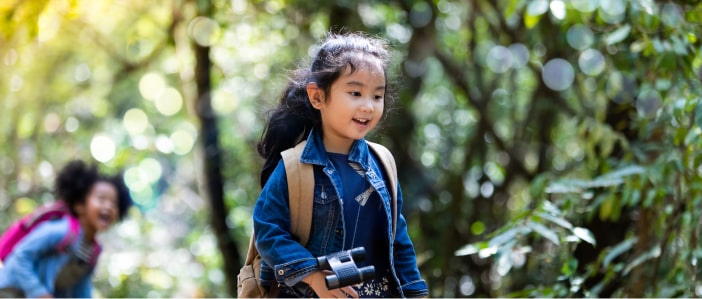
Going for a walk
If you know of a particularly beautiful walking route, think about heading there for a family day – as long as it isn’t too much stress on the little ones. Cycling is a good alternative for any kids who’d prefer to glide rather than trot through nature.
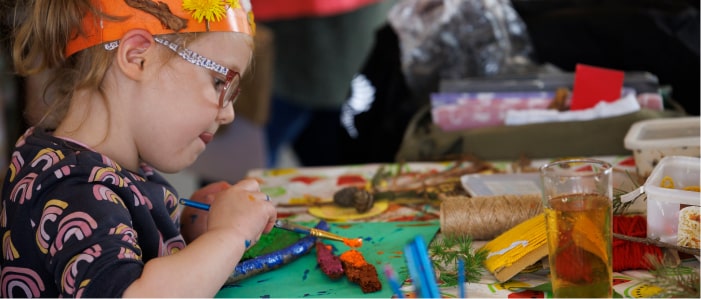
Art projects
Nature is abundant with makeshift arts and crafts supplies. While making sure you’re not doing any damage to the local environment, think about using some foliage and other natural materials to create something beautiful.

Fun and games
There are a bunch of games you can play when outside which might not be possible indoors. Unlike in a home, or even a garden, there are no barriers to your child’s ‘arena’. Think of some creative activities, making sure they’re all safe to do (for both you and those around you).
Let’s look at just how beneficial spending time outside can be for little explorers. We’ll assess as many as 50 different ways outdoor learning and forest schools can stimulate, educate, and help a child to flourish.

50 ways nature can help a child develop
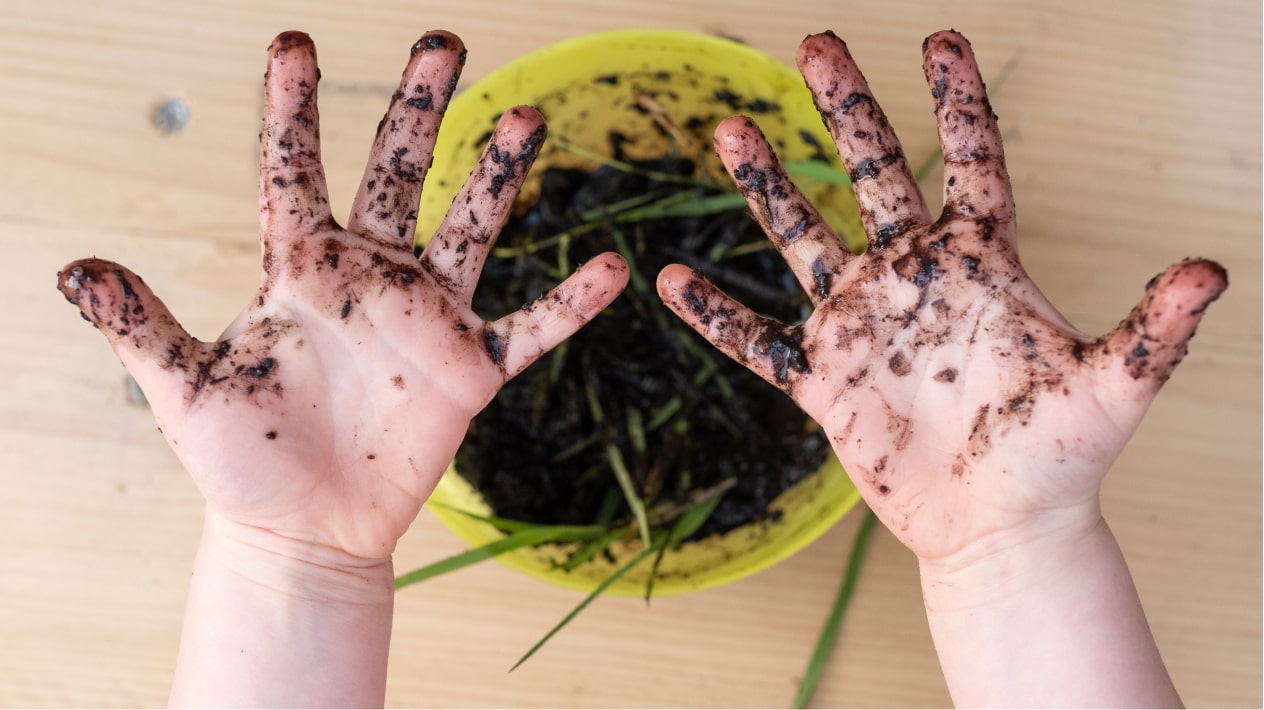
Fact 01. Make mud pies together
Squishing and squelching patties of mud together to form disc-shaped ‘pies’ has been a staple of exploring the great outdoors for generations. But who says you have to stop at pies? Let your kids mix dirt and water together to create a range of different shapes. Just be sure to bring extra water, soap, and a towel to help tidy up at the end of the day.
The benefit: The tactile nature of this activity is a good sensory tool for younger kids, while also allowing children of all ages to explore their more creative sides. It could also serve as a handy lesson in problem-solving.
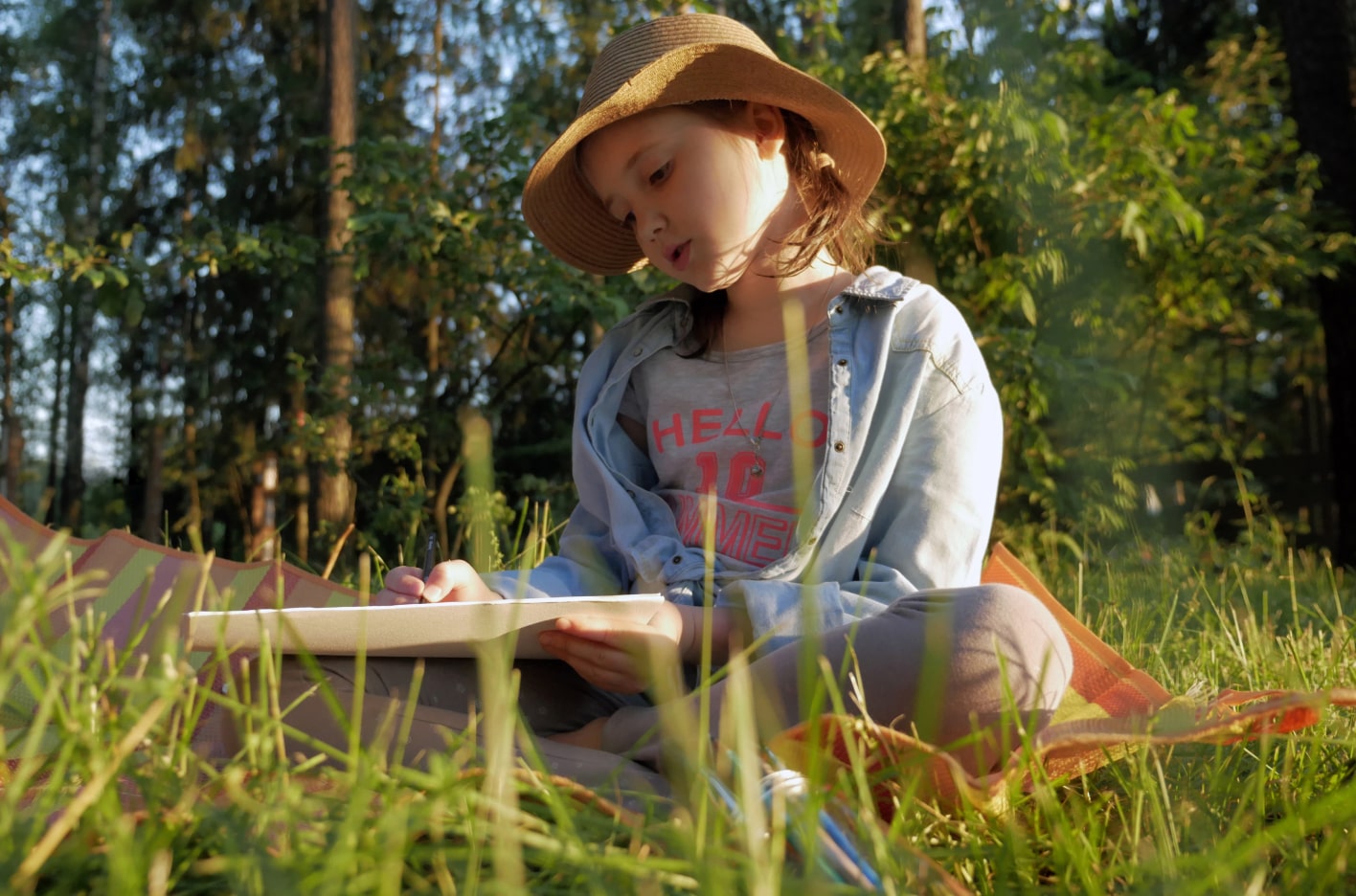

Fact 02. Create a nature journal
Encourage a child to write down everything they see when they head out into nature. You can create a book with different sections (such as ‘trees’, ‘flowers’, ‘animals’ etc.), and have them scribble down what they saw and when. To crank the creativity up a notch, you could even encourage them to draw or paint what they see, instead of just writing.
The benefit: Spending at least two hours a week in nature boosts a child’s mental health and overall happiness. It also helps their organisational and cataloguing abilities (important skills to have at any level of education). Whether they draw or write down their findings, both will help creativity to blossom.
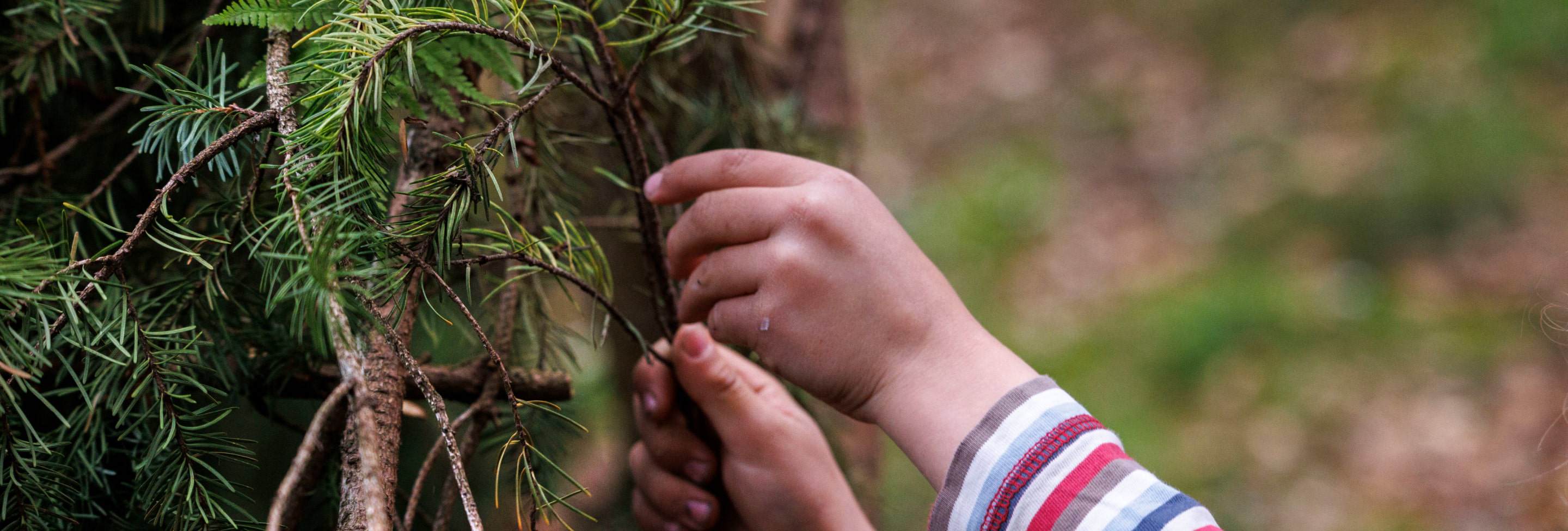
Fact 03. Build a fort or playhouse
We all loved escaping to a world of our own as a child. And while for some of us that meant throwing a few blankets over some chairs in the dining room, kids will benefit from the chance to create a structure made out of natural resources provided by the world around us. Use twigs, sticks, and larger logs to form the bare bones of the fort, then top if off with foliage which has fallen from surrounding trees.
The benefit: This activity again appeals to creativity, while also providing practical skills in the way of construction, problem-solving, and some very basic engineering. This could be the first step in nurturing the next Da Vinci.
Fact 04.Flower pressing
Picking and pressing beautiful flowers is not only fun, but also gives you the chance to decorate your home. It’s something you can do together, spending time helping them to learn the art of flower pressing. Follow these simple steps to become the master of pressing flowers:
Pick the flower you want to press
Prepare it by removing any excess or dead leaves
Open a large book and place parchment paper on its pages
Place the flower face down on the parchment paper
Close the book carefully, then place several more heavy books on top of it
Leave the book completely alone for 3-4 weeks
After 3–4 weeks, you will have a perfectly pressed flower. Your finished work of art can be proudly displayed on your wall.
The benefit: Kids learn the value of care and precision, while also picking up a unique skill which could serve them well for years. The wait-time teaches patience, perseverance, and emphasises the value of long-term success over short-term wins.
This activity might also encourage them to take a more active interest in all things botanical – giving them an appreciation for the natural world. Tall oaks grow from tiny seeds, after all.


Fact 05. Use chalk on floors
Sometimes we can be strict with kids when playing inside. While rules can’t be totally thrown out the window, it’s definitely fair to say they’re a little looser when it comes to playing in nature. A great example of this is letting a child go wild and drawing on the floor with chalk. This is a natural, non-toxic substance, which will be washed off as soon as it rains.
The benefit: Creativity is at the forefront when it comes to chalk writing and drawing – but it’s also a great opportunity to practice some basic maths by drawing out numbers. It’s also a welcome lesson that, sometimes, it’s okay to push back against societal norms (as long as it doesn’t hurt anybody).
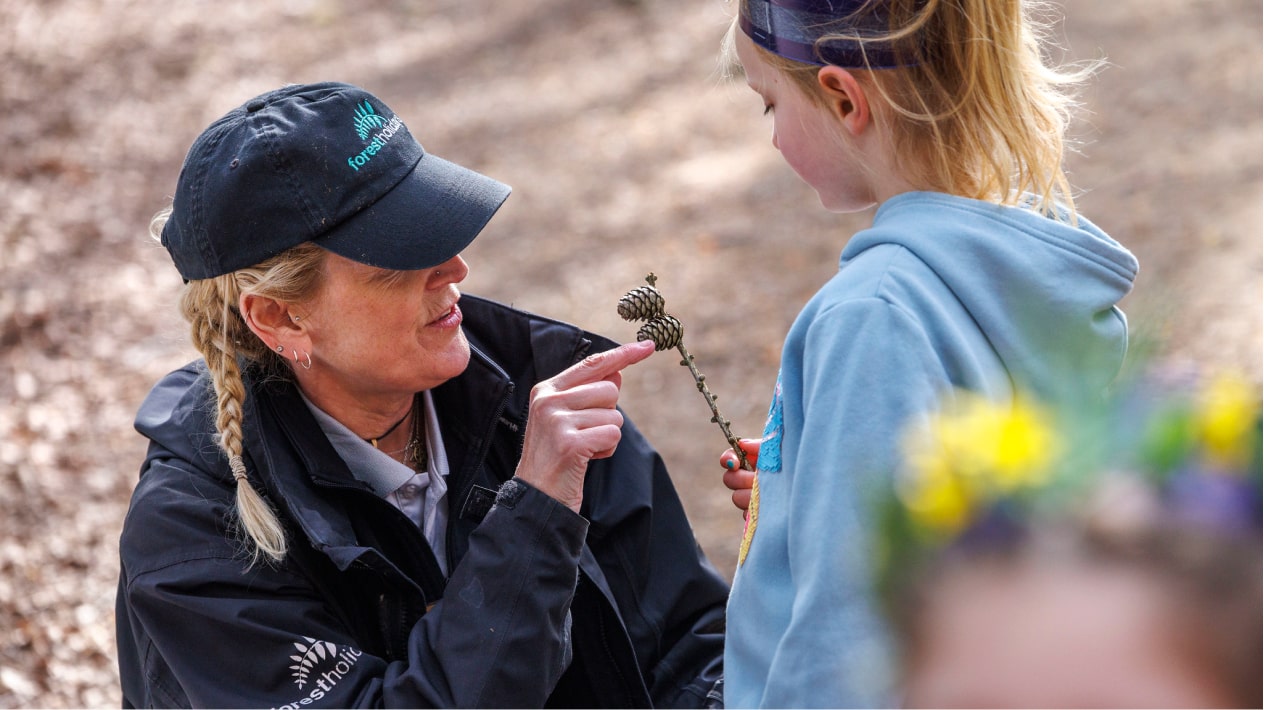
Fact 06. Explore with a Forest Ranger
Forest Rangers are champions of the natural world. They know every nook and cranny of the forest, from the tallest tree to the cosiest rabbit warren. They can be fantastic guides for kids – teaching them how to care for the beautiful world around us, as well as more complex topics like forest bathing, bushcraft, and even survival skills for the particularly adventurous.
The benefit: A child can pick up a heap of benefits from time with a skilled Forest Ranger. As well as the amazing practical advice they give, children could pick up techniques like mindfulness and problem-solving which help steer them through life.
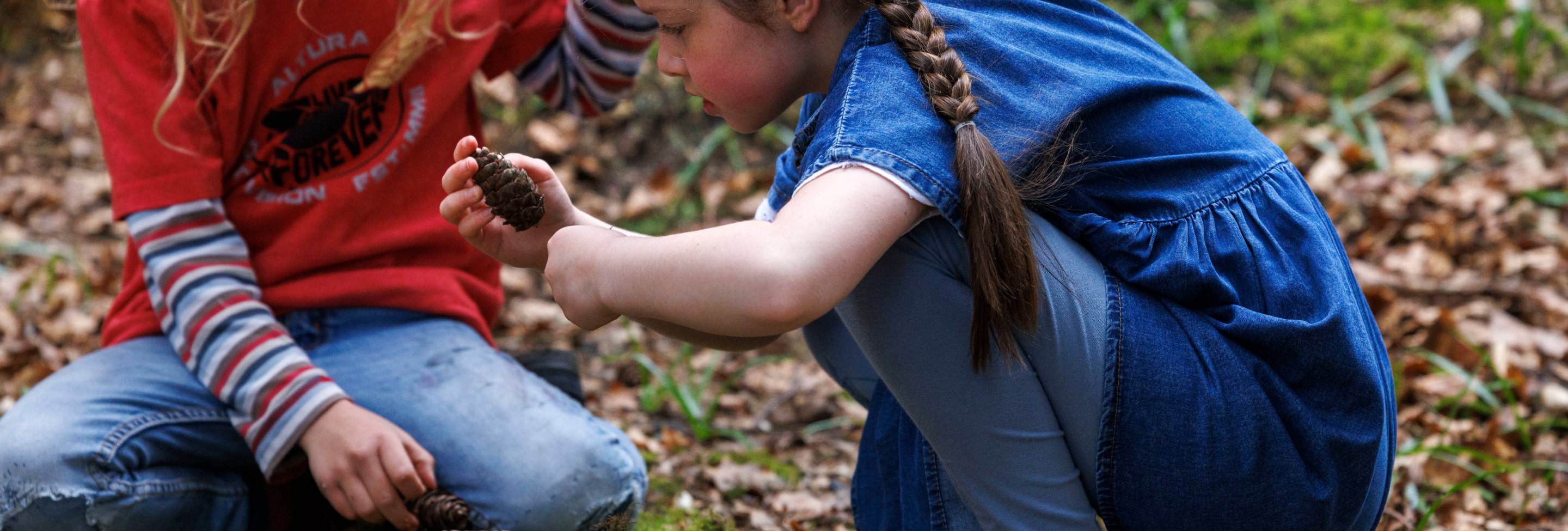
Fact 07. Go on a scavenger hunt
In an area of woodlands which you know is safe, hide a bunch of funky natural items for kids to find. Make sure to give them clues, and, if you feel more comfortable, stay with them while they explore. You can also make the items they need to find related to the natural world. For younger kids you can make this more texture-specific, asking them to find crinkly, smooth, crunchy, or bumpy things.
The benefit: This helps develop map-reading, problem-solving, and orientation skills for older kids, as well as basic tactile lessons for younger children. As many as 30-40% of kids are tactile or kinesthetic learners (which means they learn most through touch and stimulation).
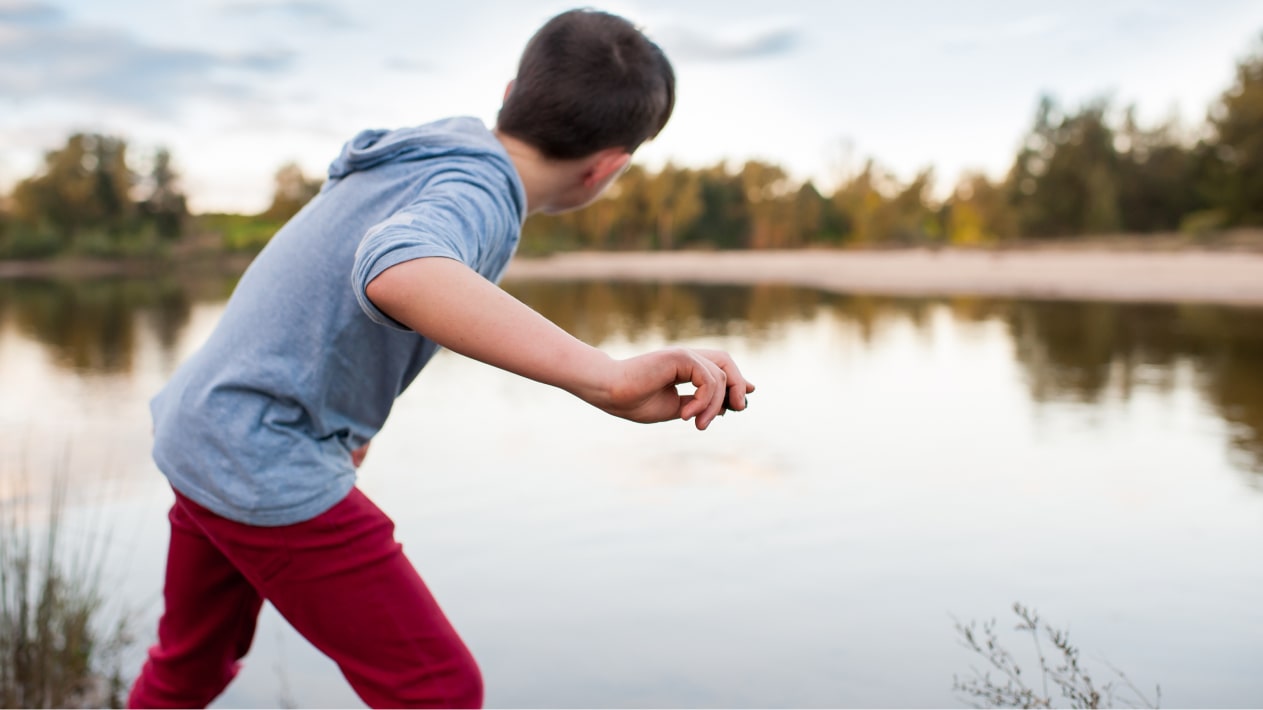
Fact 08. Play skipping stones
For this game, all you’ll need are a crop of relatively flat stones, and an open body of water. Teach kids how to angle their hands properly to skip the stone along the face of the lake or pond, then have them see how many times they can make them bounce.
The benefit: As well as learning a practical skill, the virtue of patience, and how to follow instructions, skipping stones can also be used to practice basic maths.
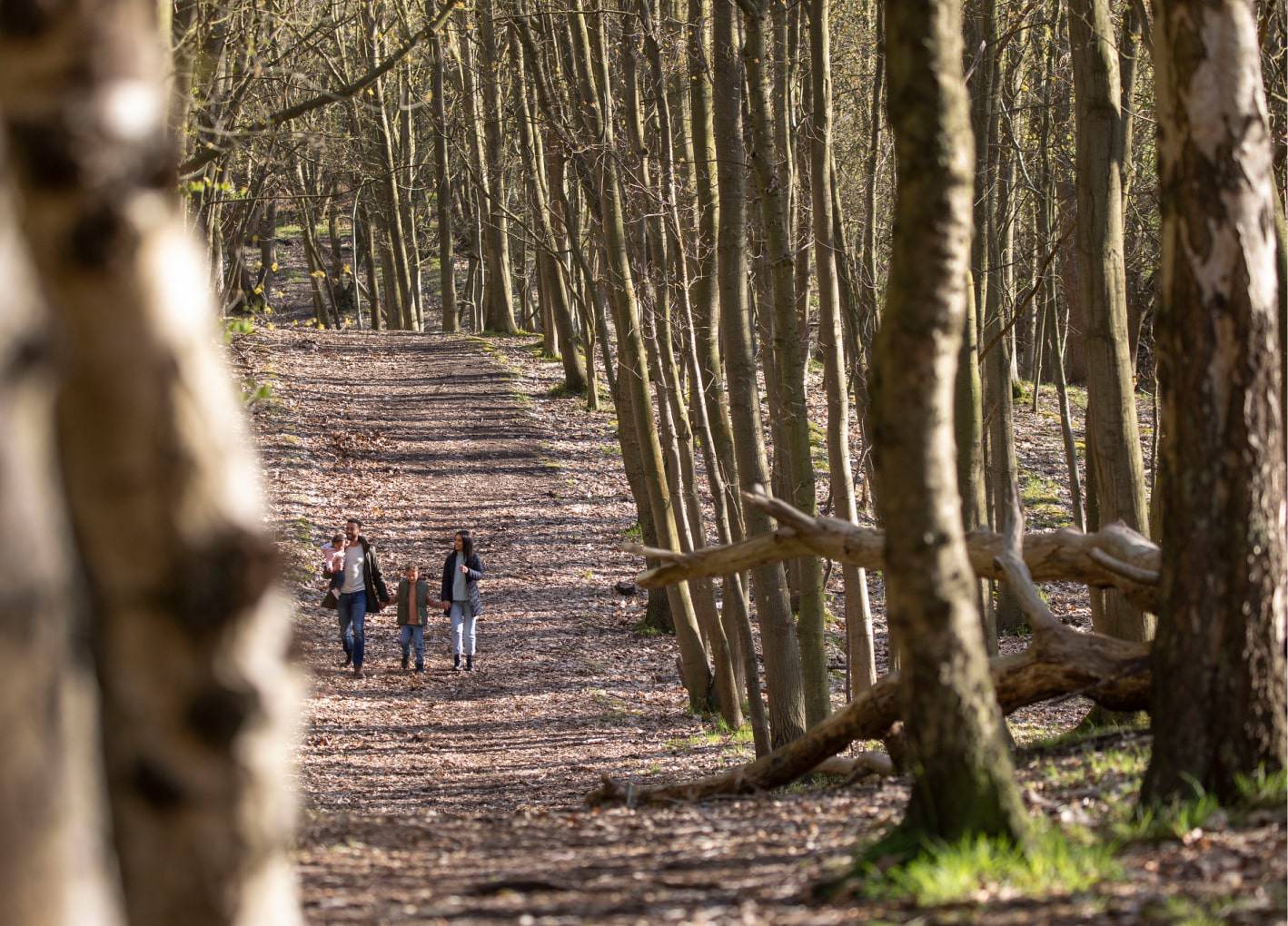

Fact 09. Go for nature walks
What’s better than a leisurely stroll through the natural world? Kids will appreciate the change of pace. It’s also a good way to get them away from technology, even if it is only for a few hours. 96% of kids in a recent survey said they watched TV at least 15 hours a week, while another 40% played at least 6 hours of video games in that time. Make a point of swapping the console for the comfort of nature at least once a month.
The benefit: Exercise is chief amongst the benefits of a nice walk through nature. This type of activity isn’t too hard on the bones, but teaches kids the value of staying active. What’s more, you’ll also be able to educate them on a variety of different things you find throughout the journey. When else will you get the chance to chat about squirrel dining habits?
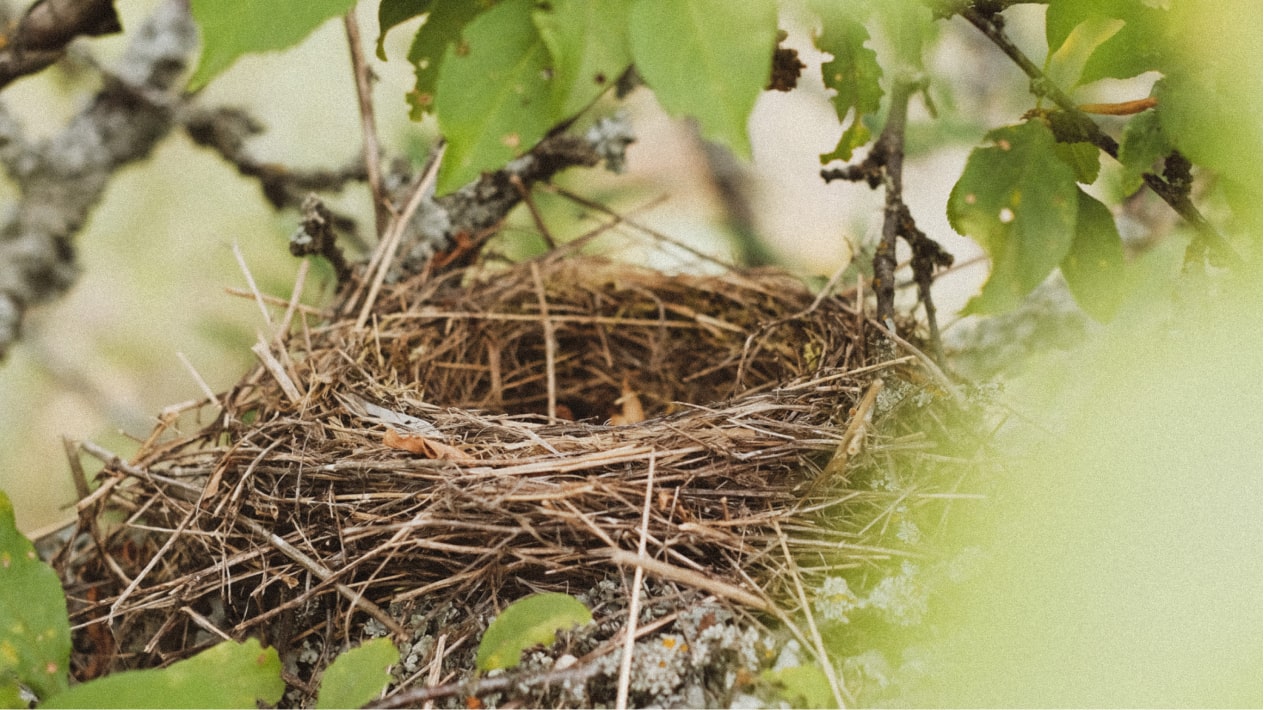
Fact 10. Investigate a nest
Bird nests aren’t something we stumble across very often. If you do find one (and it has no eggs in it or signs of use) make sure to explore it. We wouldn’t advise removing the nest from where you find it, but inspect it as closely as possible to understand the wonder of how these clever birds put their homes together. Construction workers eat your heart out.
The benefit: As well as giving them a better understanding of how one part of the natural world works, this kind of experience could inspire kids to pursue learning further. It’ll spark their curiosity, encouraging them to go out and do more practical learning on their own.
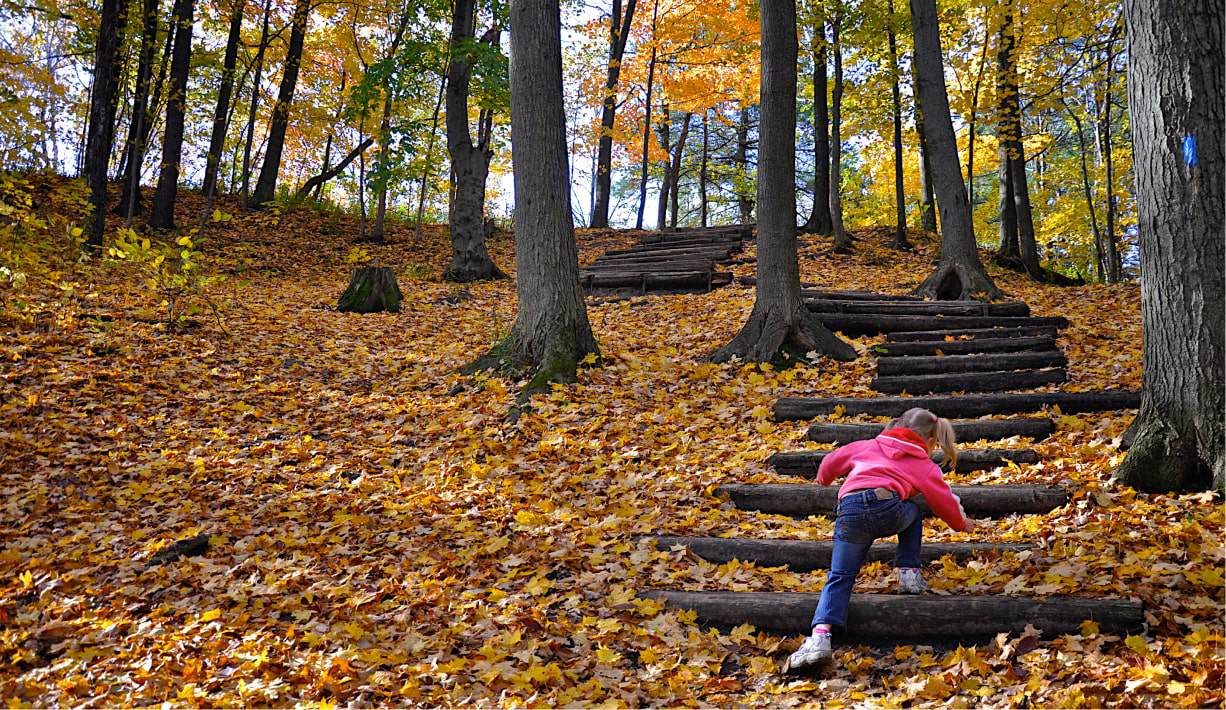
Fact 11. Counting while walking
While this isn’t something you can keep up for too long, counting the number of steps you take between points, or up a trail, is a good practical learning tool for younger kids. To spice things up, you could ask them to only count odd or even numbers, or go as far as to tell them to say all divisions of a certain number out loud (5, 10, 15 etc. for those in the five times table).
The benefit: Basic maths skills can be enhanced this way, while also having the potential to make what would be a potentially arduous uphill journey a little more fun.

Fact 12. Play hula hoop games
Does it get any more classic than the hula hoop? Simple and reliable, this toy has a bevy of practical purposes too. Whether you’re choosing to use it for its original purpose, as a makeshift discus to try and hoop cones, or a zone on the ground which kids have to hop between, a hoop can be a fantastic tool in a number of games.
The benefit: Teaching motor skills, providing exercise, and serving as a catalyst for games where kids can learn to play by the rules, this form of activity is beneficial for children of all ages.
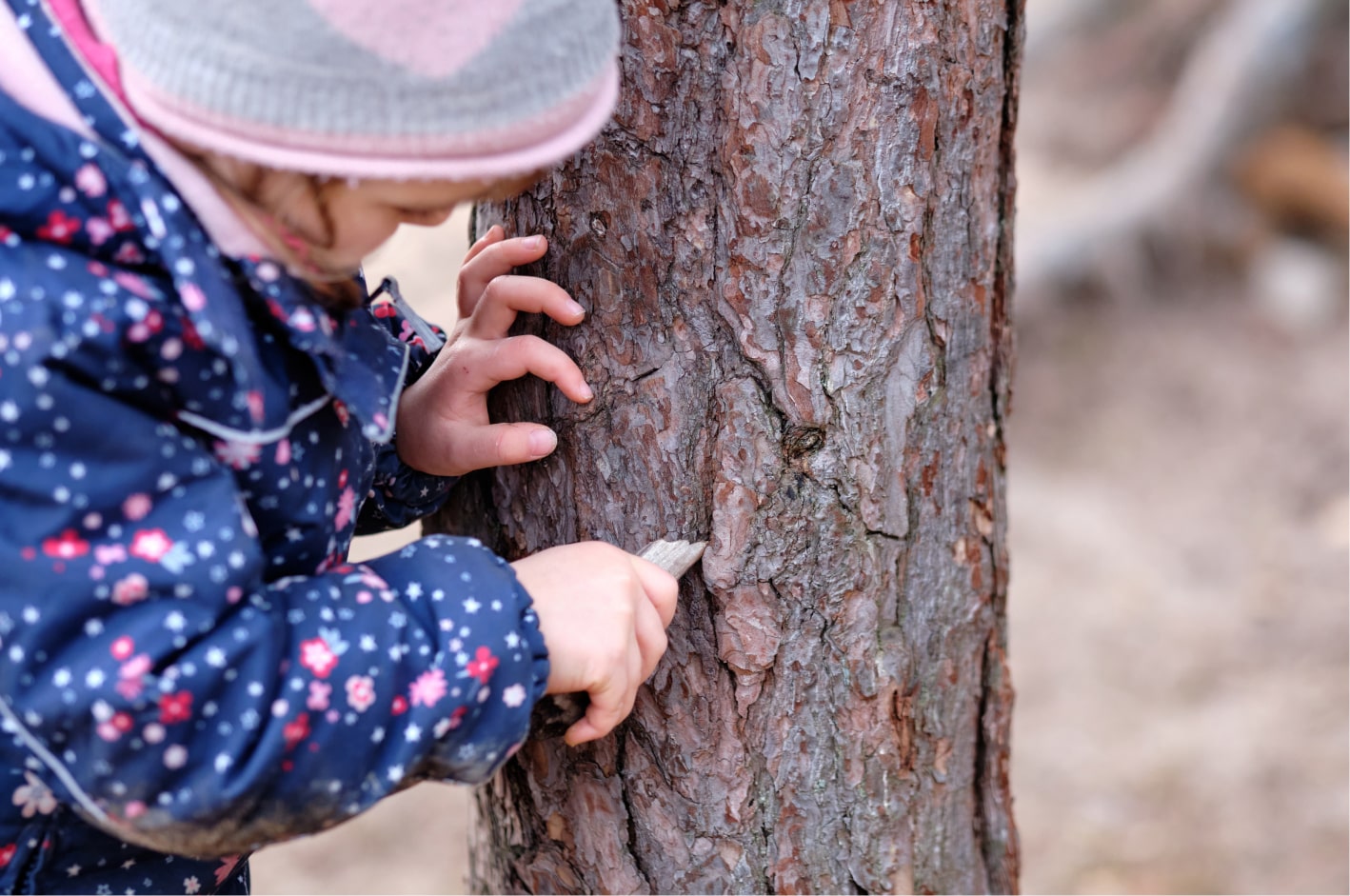

Fact 13. Bark etchings
Take a plain piece of white paper, then press it tightly against the bark of a tree. Using their favourite coloured crayon, have a child rub over it. The natural pattern of the bark should be imprinted on the paper, creating a colourful display which will wow them. These etchings can be displayed as art, or combined as part of a larger collage.
The benefit: This activity allows kids to explore their creative side, while also gaining a deeper understanding of the natural growth and development of trees. Visiting the same tree every so often will give them an appreciation for the ever-changing nature of the world around us.
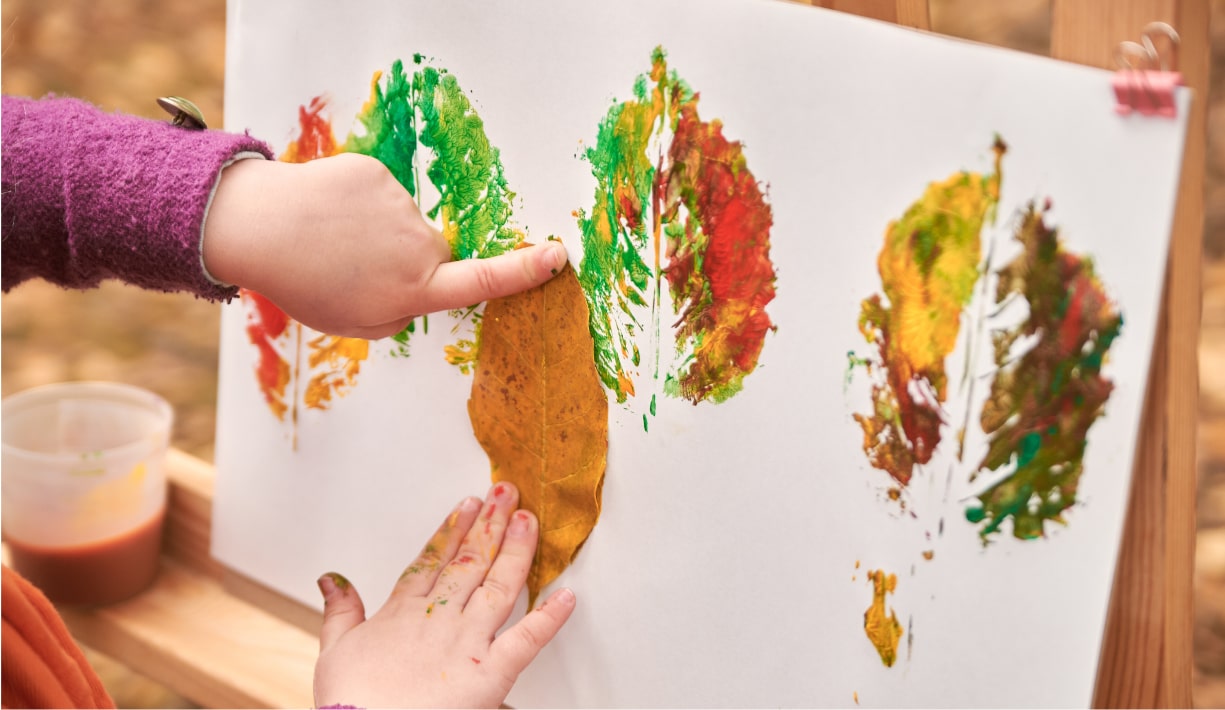
Fact 14. Making natural art and prints
Use the world around you to create art. Take leaves which have fallen naturally and fashion them into pictures and shapes. If you’re lucky enough to find enough raw materials, you can even try your hand at building little stick figures or scarecrows. Also think about taking some extra foliage away and using it for art to be done at home later.
The benefit: This helps nurture an appreciation for the world around them, while also allowing the creative juices to flow. Think about repeating this across different seasons to show them how the colours and atmosphere of the natural world changes as the year goes on.
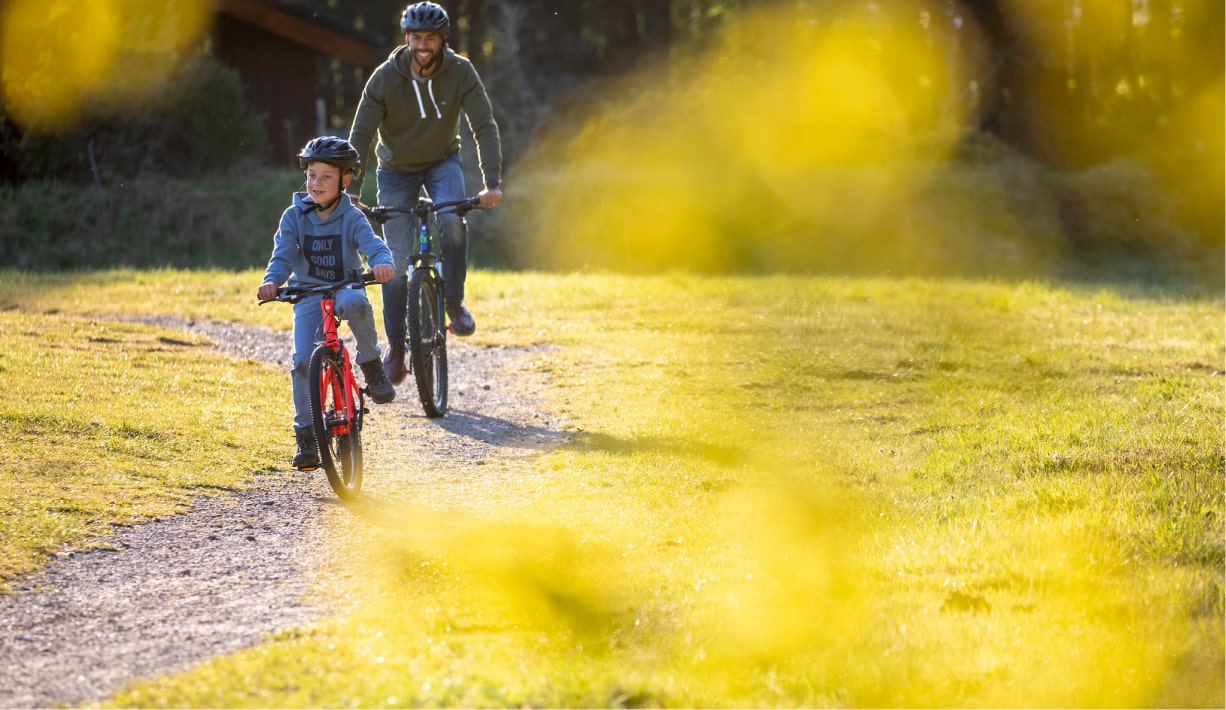
Fact 15. Ride a bike through the woods
Heading out on a bike can be a really fun family bonding experience. Learning to ride a bike is also a key childhood milestone with many parents thinking that it’s a vital life skill for children. Make sure everyone rides safely, then head off on a route which you know is safe and all of you will be able to cycle.
The benefit: A child’s visuospatial and coordination skills will be improved by riding. These are traits which can be very useful in later life when learning how to drive. It’s also a great form of light exercise, which doesn’t result in too much exertion. Even light cycling can burn as much as 174 calories an hour for a child.
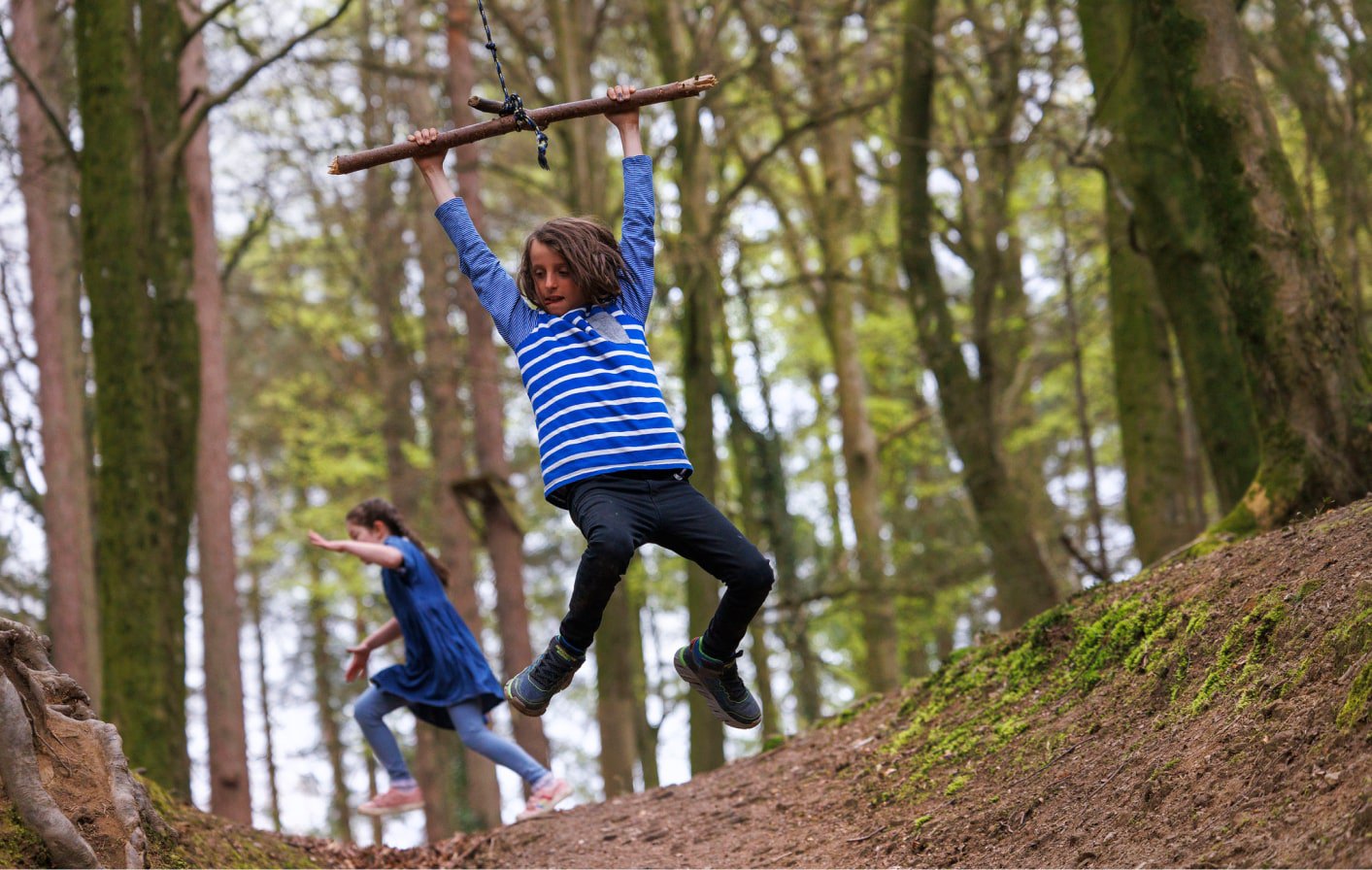

Fact 16. Make and use a rope swing
If you find (or already own) a piece of rope which is strong enough to support the weight of everyone involved, it’s not too difficult to fashion a simple swing. You can use a clean plank of wood as the seat of the swing, or even just work a loop into the rope for your foot to go through. It’s also important to attach the swing to a branch which you’re confident can hold the weight of anyone who uses it.
The benefit: Team-building, problem-solving, and creativity will all be heightened through this unique activity. Make sure to supervise any construction, as this is something which will need the helping hand of an adult.
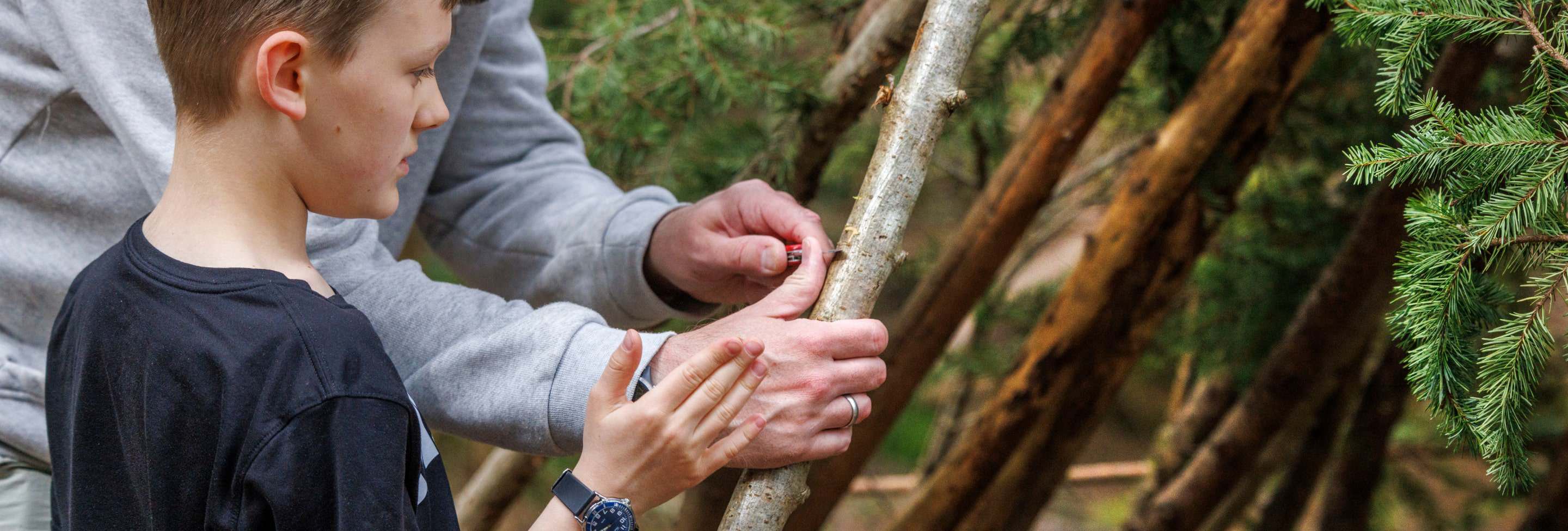
Fact 17. Practice some simple woodwork skills
We’re not talking about creating state-of-the-art wooden birdhouses. Under strict supervision, let older kids explore drilling holes in wood, banging nails into planks, and using things like rubber bands and bobbles to create shapes and designs. This should be an introduction to the world of woodwork, rather than the kind of course you might be taught in the classroom.
The benefit: This tactile activity will develop fine motor skills, as well as once again helping to inspire any creative side. It also provides a taster session of sorts for any kids wanting to pursue woodwork further in the future.
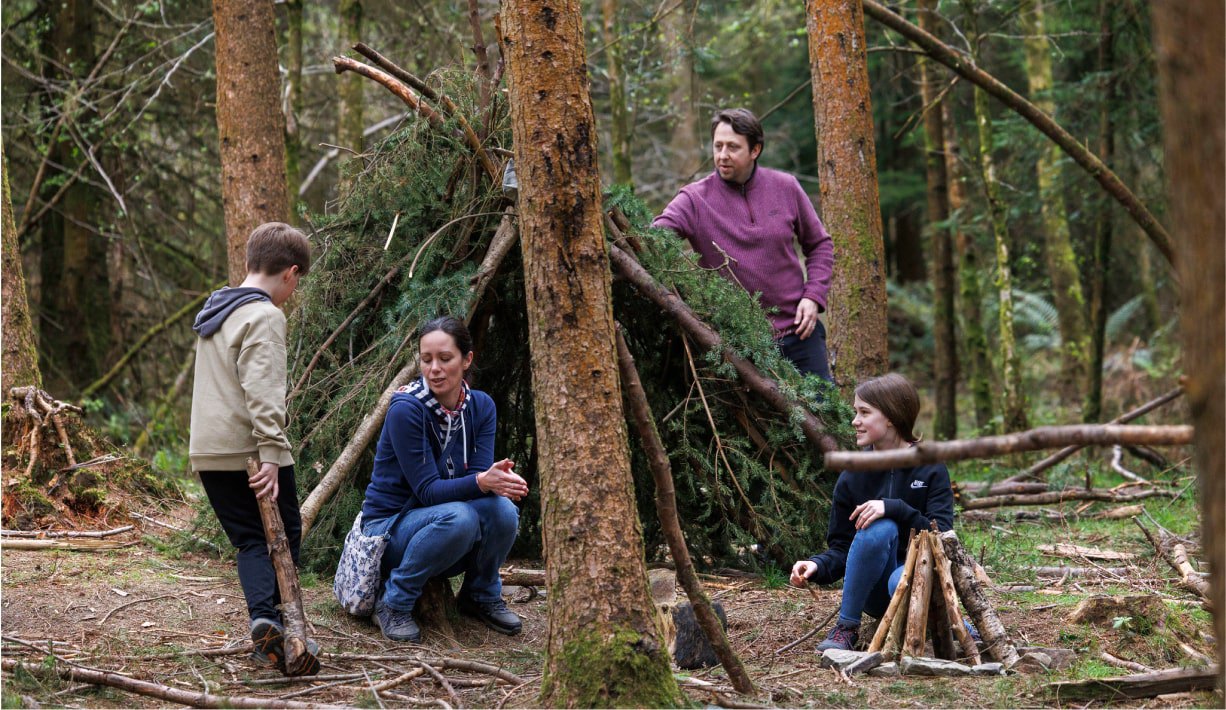
Fact 18. Build a communication-friendly space
The forest will be littered with areas to sit in quiet contemplation, or have a lovely private chat in a safe place. While sitting in a quiet hollow is nice in itself, you can also help to create dedicated areas to chat in. Bring logs together to form makeshift benches, or use fallen branches to fashion a cosy homemade den. Around 70% of parents say they “struggle to communicate meaningfully,” with their kids, so it’s worthwhile trying to start conversations on a walk, or in the relaxing setting of nature.
The benefit: This activity teaches children the importance of having a safe space to talk, as well as the benefits of communication. These aren’t necessarily skills, but rather an important aspect of understanding emotional health.
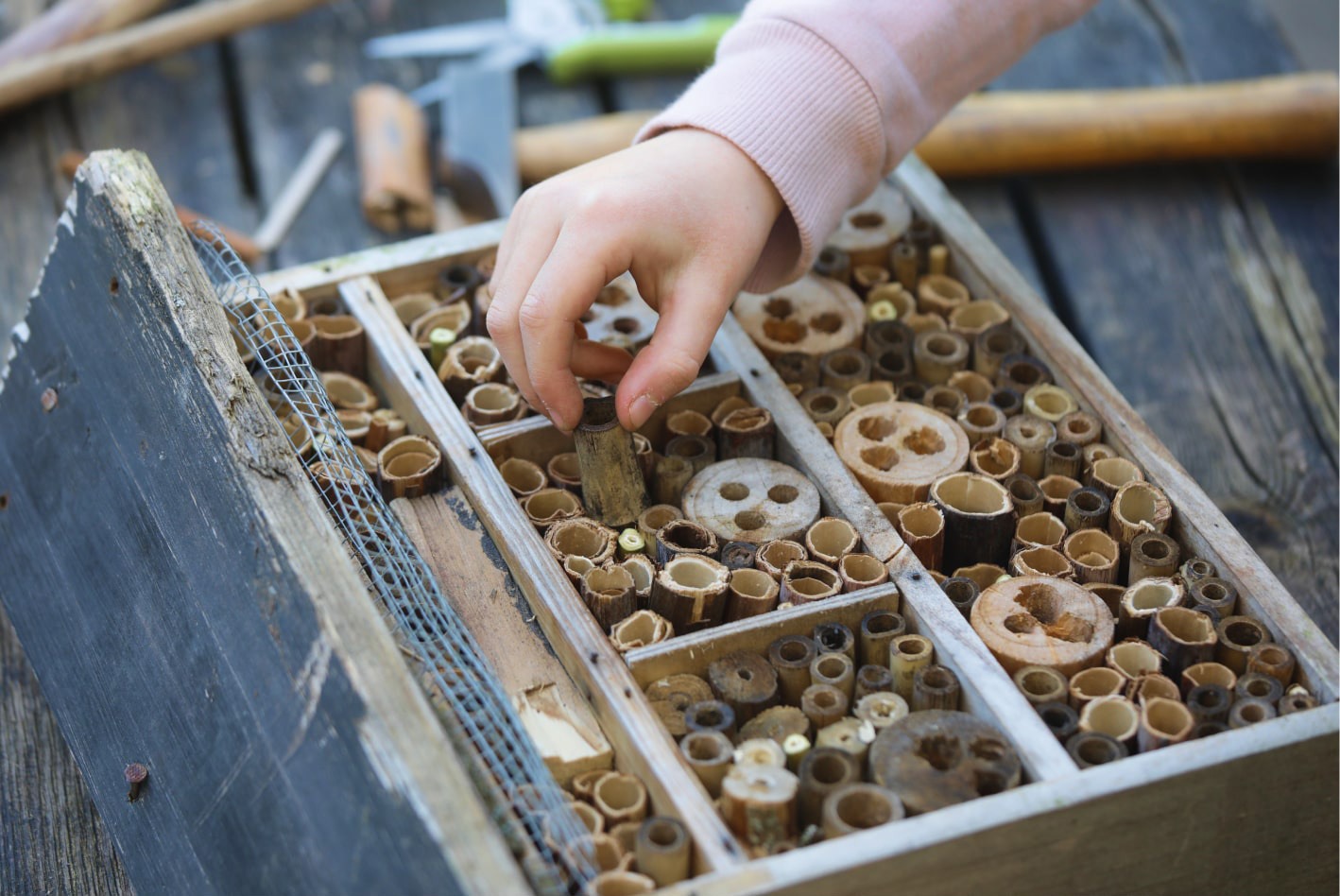

Fact 19. Build a bug hotel
Building a hotel gives creepy crawlies a place to nest and explore – and you can see them in their natural habitat. Take a couple of wooden pallets, stack them, then add some logs on the top. Finally, add some compost and grass seed on top to help make it more enticing to the critters. This will create a place to live for a whole bunch of bugs.
The benefit: There are an array of benefits here. Kids will learn the value of ownership of a taks, while also heightening problem-solving and communication skills. There’s also an environmental lesson to be learnt here, as kids understand the value of bugs on the UK’s ecosystem.
Fact 20.Play chalk jump games
We all fondly remember the simplicity of chalk games from our childhood. What’s great about these is that you only need one tiny stick to turn any flat surface into whatever arena you want. Ramp up the difficulty of the game you’re playing in accordance with the age of the child.
The benefit: This is a fun and interactive way to help motor skills, coordination, counting, and colour recognition to flourish. If you let the kids themselves come up with a game, it can also help develop creativity.
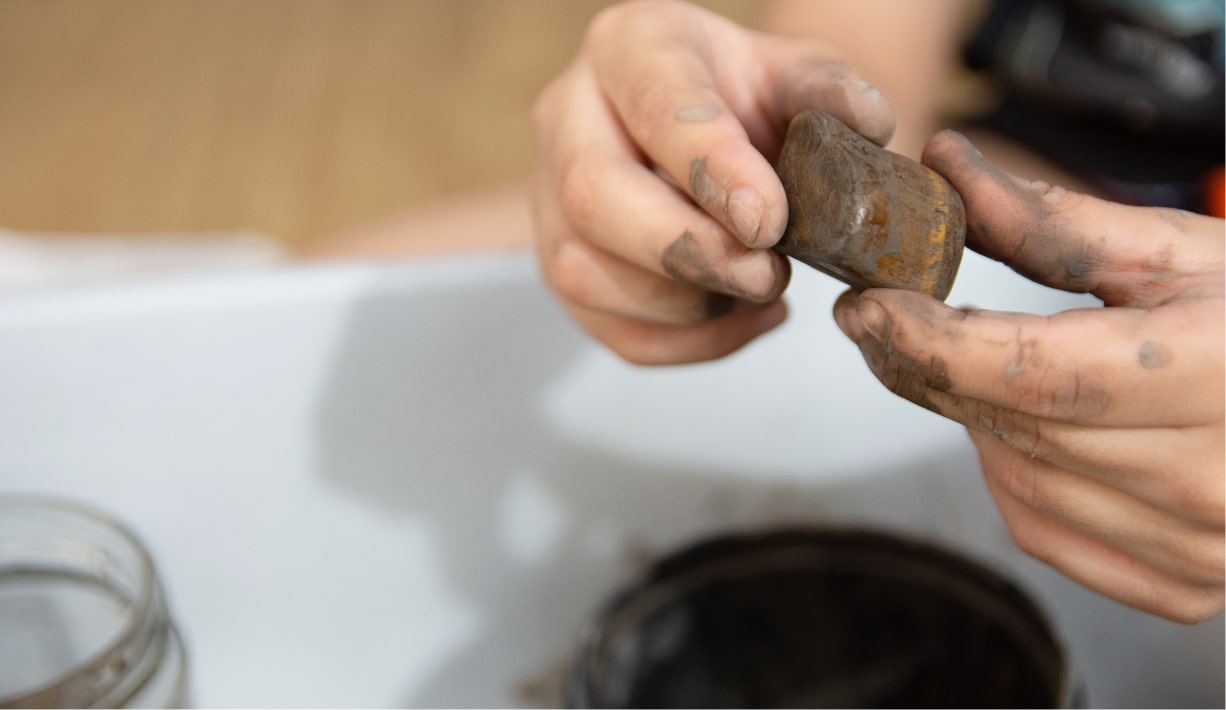
Fact 21. Conduct rock science experiments
Science doesn’t always have to take place in the classroom. Finding and exploring different types of rock is a great way to learn more about the natural world, and the impact which the weather and us humans have on it. Look for erosion and staining, as well as testing how hard a rock is using the Mohs scale. That means lots of smashing and bashing. How fun.
The benefit: This will help to nurture a child’s inquisitive side, while also providing them with a grounding in basic geology. You can never have too many rock experts in the world.
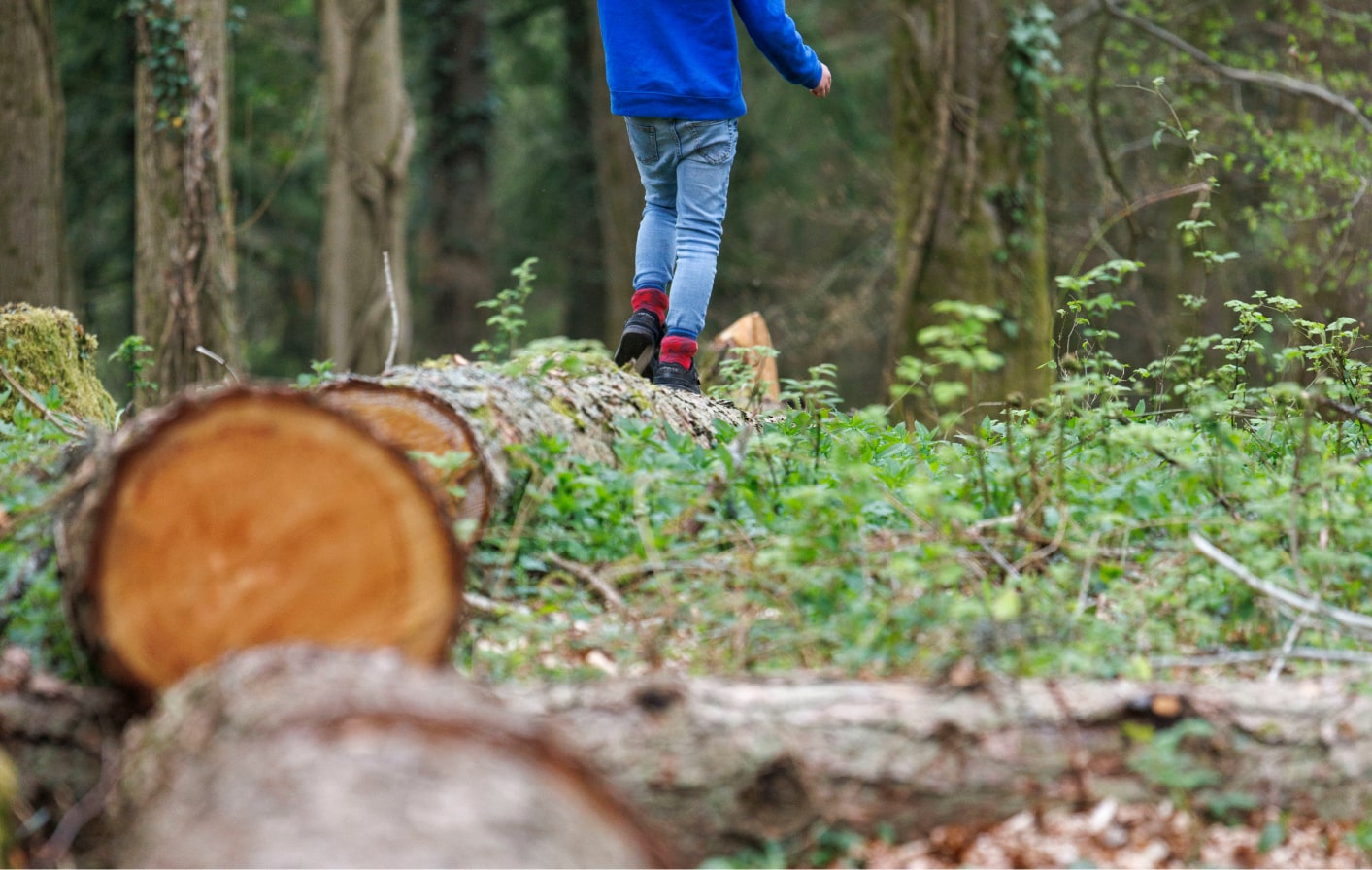

Fact 22. Create and master an obstacle course
One of the most amazing things about nature is that it’s so diverse. No two areas are ever exactly the same. This gives you an unending series of opportunities to chop and change the landscape to make your courses as tough, easy, or fun as possible. As always, make sure to take safety into account when creating your course.
The benefit: Motor skills of all varieties are worked on here, as well as providing a solid grounding in a fun form of exercise. This is something which needs to be addressed across the UK, with just 44.6% of kids currently do the recommended amount of daily exercise.
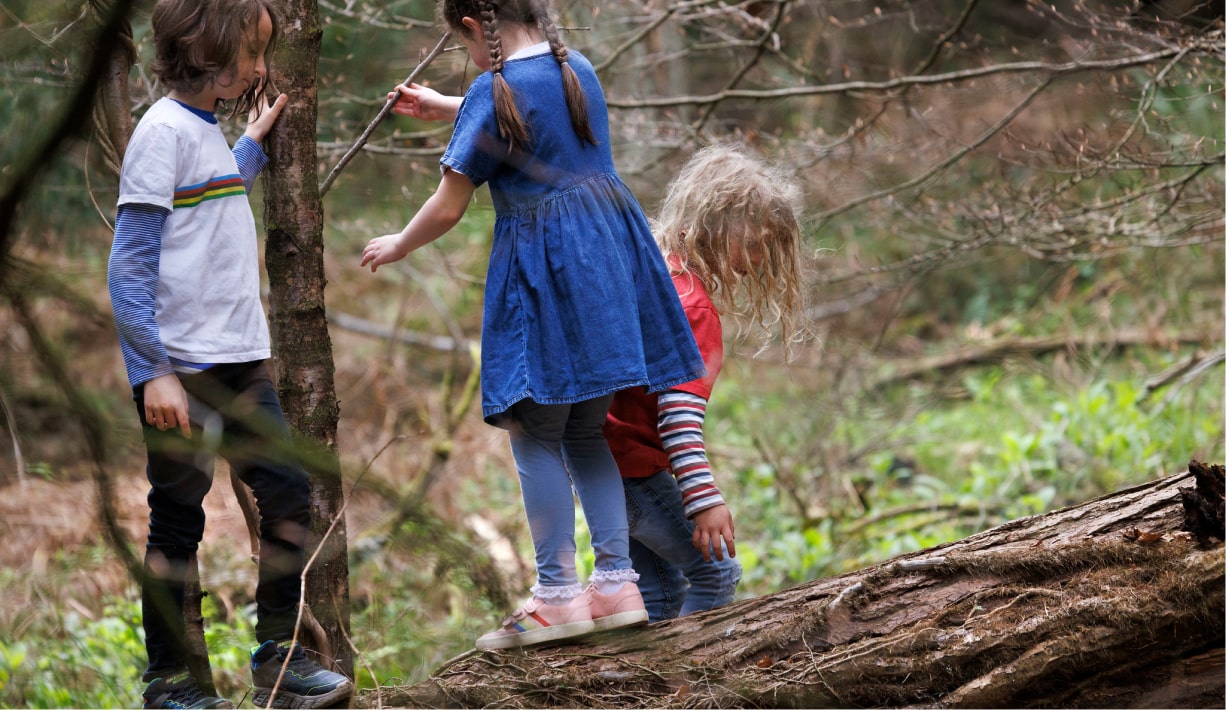
Fact 23. Listen silently to the world around you
It can be easy to overlook the peaceful serenity of nature. Encourage kids to take the time to sit and soak in the world, without talking, using their phones, or moving around too much. If you want to make this more interactive, ask children to write down any onomatopoeic sounds they hear during this period.
The benefit: This activity should help them to develop a deeper appreciation for mother nature, while also helping with phonics. Slow and focused breathing has also been shown to calm the nervous system, lowering stress, blood pressure, digestive issues, and other physical factors.
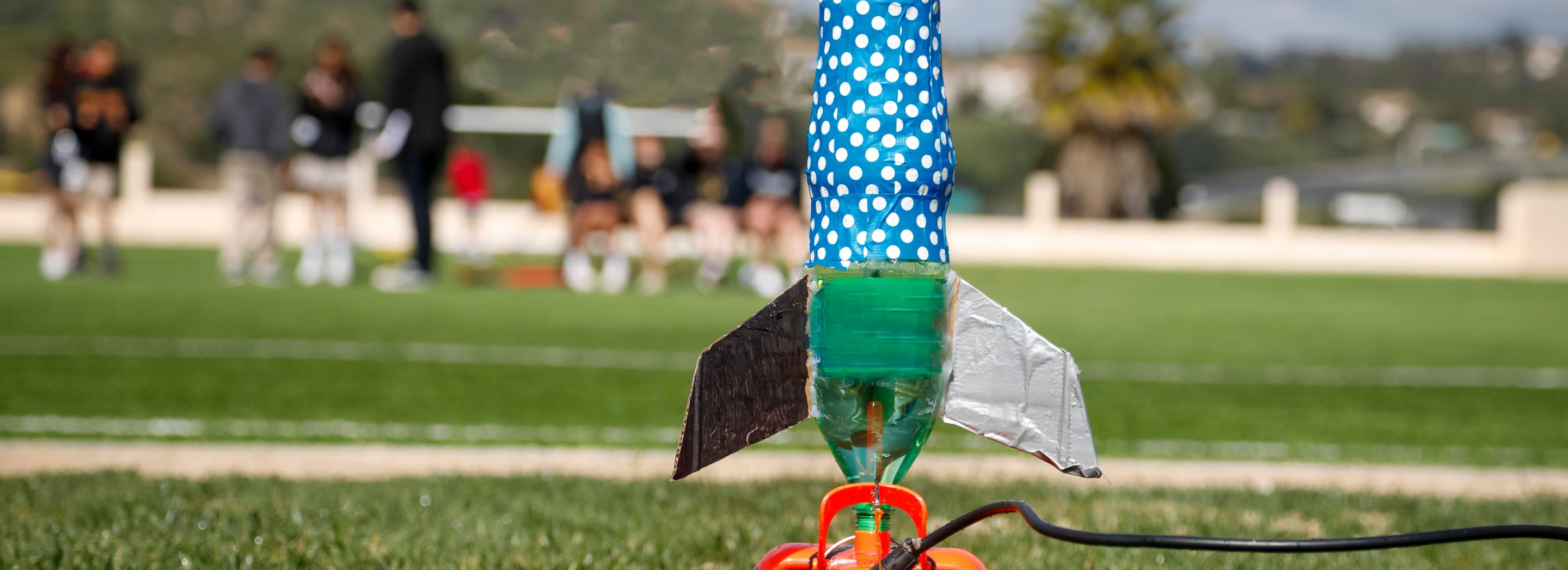
Fact 24. Build a water bottle rocket
All you’ll need for this nifty experiment are an empty water bottle, a cork, some cardboard cones for wings, a pump, and water. Decorate your bottle to make it as pretty or cool as possible. Next, fill the bottle a quarter full with water, then place the cork in the top. Force the needle of your pump through the cork, then attach it to the pump itself. Stand back, start pumping, and watch as your rocket soars high into the sky when the pressure is high enough. Don’t pump too hard if you want it to stay in the Earth’s orbit.
The benefit: This hands-on science experiment provides an introduction to physics, while also encouraging a child to pursue their creative arts and craft side. Problem-solving, teamwork, and communication are all also really important here.
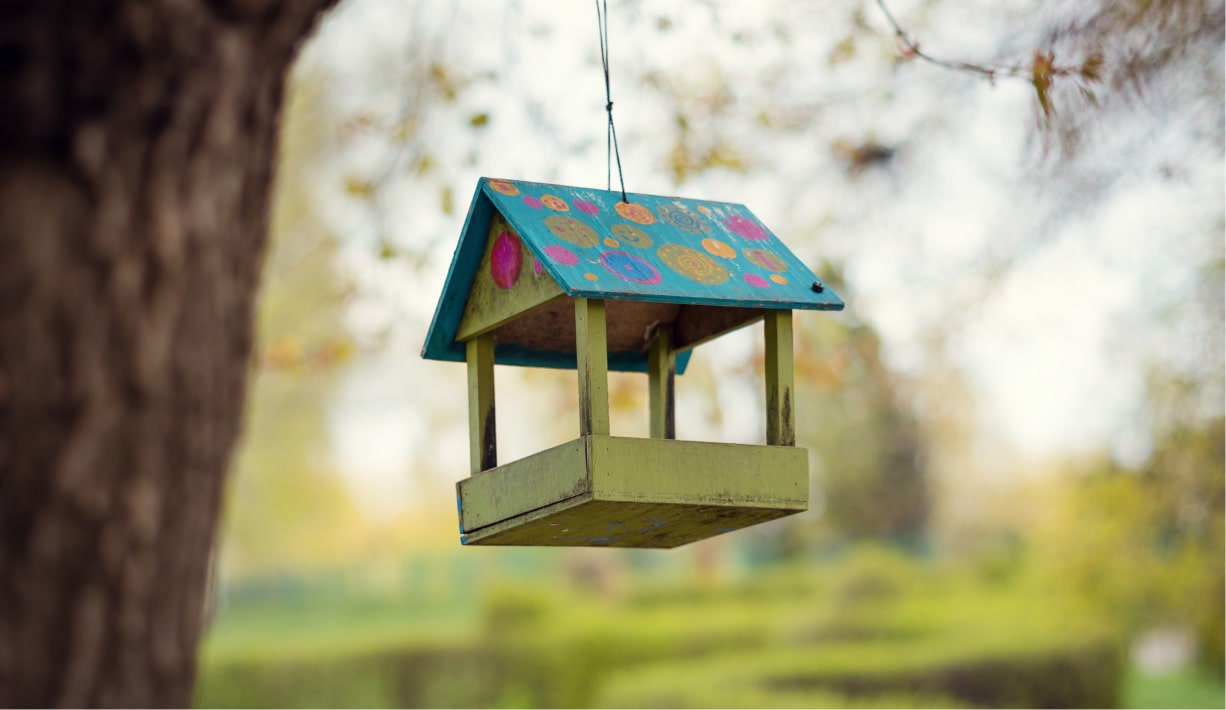
Fact 25. Build a bird feeder
For lovers of nature, birds are undoubtedly one of the biggest draws. But knowing when and where to look for our feathered friends can sometimes be tricky. Making a feeder for them to snack on is not only rewarding, but also brings birds to a hub for you to gawp and gaze at. This can be anything from a complex series of seeds in pretty shapes, to a half-cut orange which is attached to a piece of string.
The benefit: This’ll boost a child’s overall DIY skills, while also allowing them to take ownership of a project with a tangible outcome. It also provides them with a potential passion in the form of birdwatching. One study found as many as 71.8% of kids who had done birdwatching at least once found it to be “really fun”.
Fact 26.Organise a sports day
Most kids look forward to the annual sports day. Teachers often get creative in setting up unique games, which are usually rounded off by athletic events. Use the natural environment of the forest as your arena, and craft games which take the landscape into account. Tree stumps become hurdles, while a pointy stick serves as a javelin.
The benefit: This is another great way to make exercise fun. A child will learn more about teamwork, rule comprehension, and can begin to develop an understanding of the kids of activities they do and don’t enjoy.
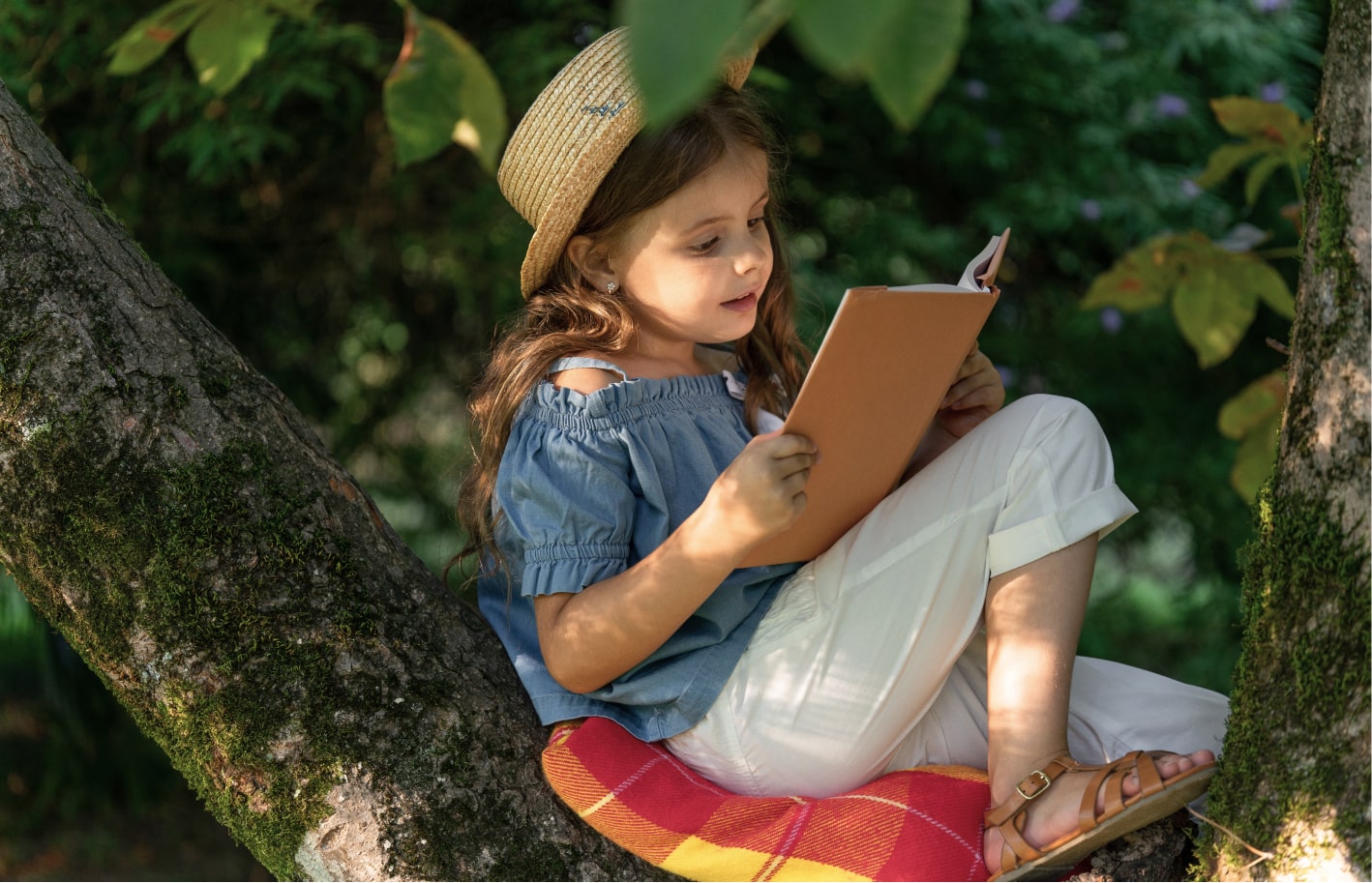

Fact 27. Create a reading nook
Similarly to the dedicated communication area, you can also carve out a small space to encourage reading. This should ideally be somewhere which provides protection from the elements, while also being quiet to allow for deep levels of concentration.
The benefit: Aside from the myriad of benefits experienced when sitting down with a good book, kids can also improve motor skills by creating their nook. What’s more, kids who read as much as 20 minutes a day have been proven to perform better in school.
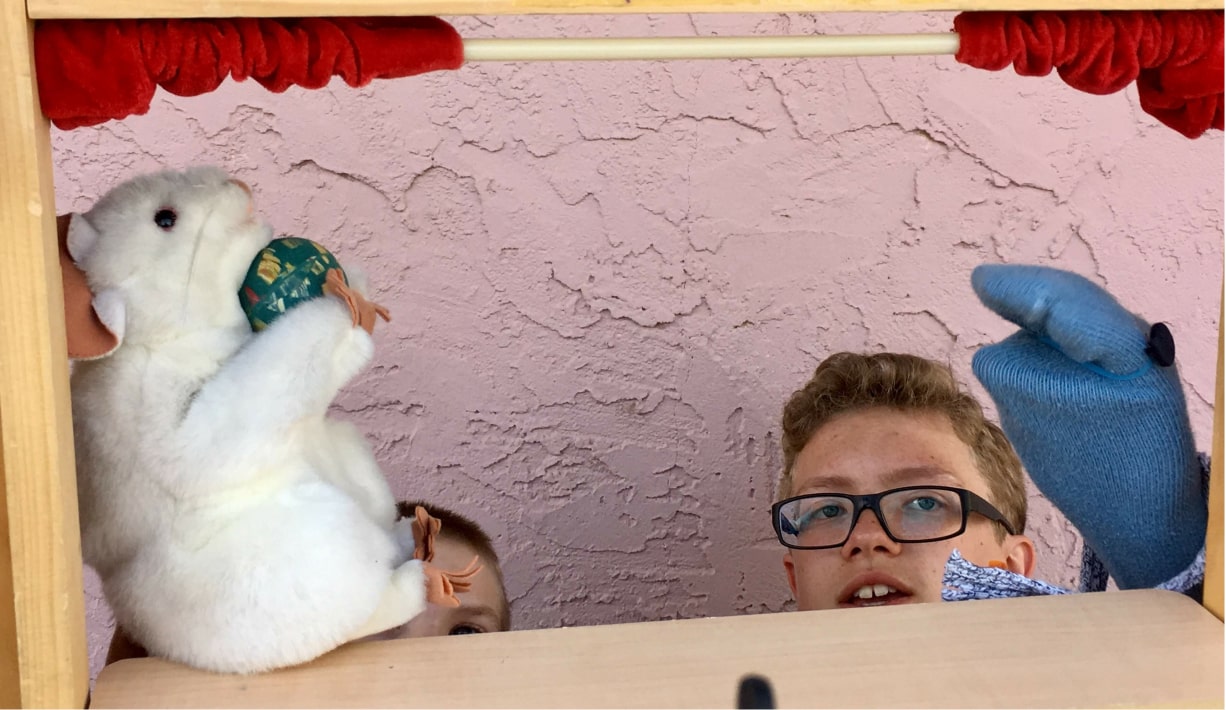
Fact 28. Use sock puppets and put on a show
Using old socks which you brought with you from home, create puppets with the help of the elements. Pine cones make a good set of ears, while you can snap apart twigs for a mouth. Find a fallen tree to lean behind, and use the trunk as the base of your ‘stage’. Get the kids to write a short play, or have them adlib on the spot.
The benefit: All things creative will be honed when creating your very own sock puppet theatre. Tactile arts and crafts skill will be improved, while the storyline of the play helps develop cognitive skills.
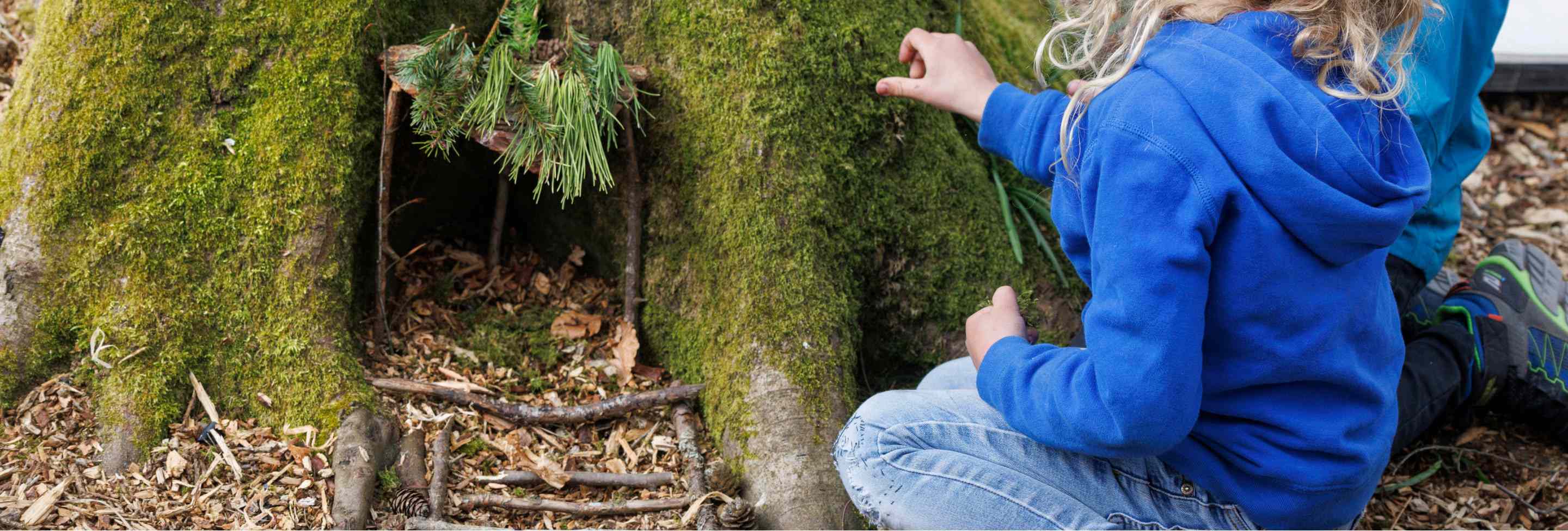
Fact 29. Create a fairy garden
Find a quiet spot in your garden or the forest, then create a little miniature village or scene which friendly garden fairies might enjoy. Some creative choices include toothpicks for tent or flag poles, small pieces of cloth for a hammock, chopped up sticks for a garden fence, and moss to serve as a makeshift bush or tree.
The benefit: Creativity is again at the forefront of this one, but with an emphasis on thinking outside of the box. Kids will have to reinvent typical household items to make something completely new and unique. This is also a great opportunity to educate them further on any legend or myth which you can tie into the world of fairies.
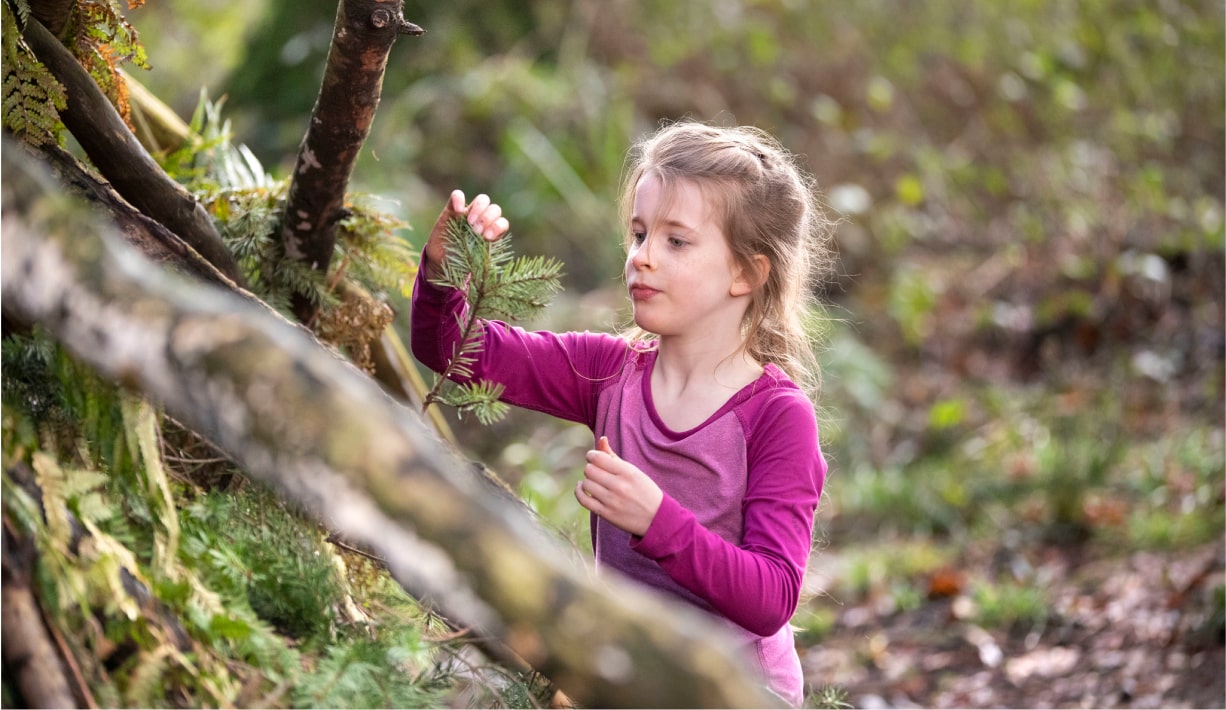
Fact 30. Outdoor colour match
Grab some colour charts from your local DIY store and take them to the forest. Pick up some greens, browns, reds, and yellows. Give them out to kids and have them find one shade of every colour that’s on their sheet. You can make this a competition, with the first child or team to bring back a full chart being the winners.
The benefit: Colour comprehension and literacy will be boosted with this one, as well as teamwork skills if you decide to make it a competition.
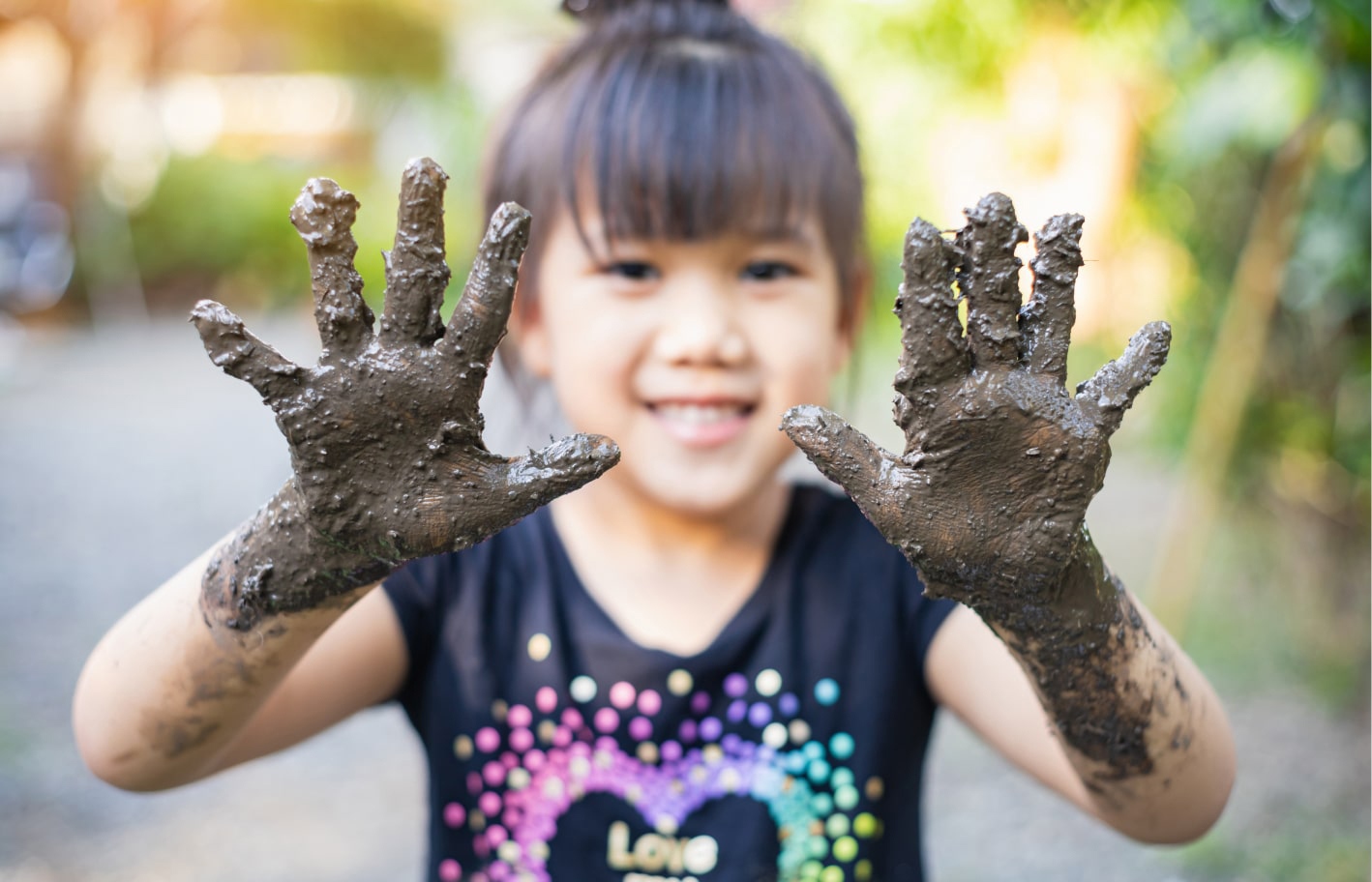

Fact 31. Do some sensory training
This is a fantastic learning tool, especially for younger explorers. Gather as many items as you can from the forest, and bury them deep in a bowl of dirt. Have children dig inside the bowl, and tell them to say what they’re feeling using descriptive words. If they’re old enough, also ask them to guess what each item is. Extra points for the wackiest guess.
The benefit: Sensory training helps to nurture a child’s understanding of the world around them. There’ll also be educational benefits if you decide to use items which they aren’t that familiar with.
Fact 32.Do some pond dipping
Take an environmentally friendly net, and slowly let it glide through the water. Take it out, turn it inside out, and gently empty the contents into a container. Using a microscope, inspect different sections of what you’ve pulled out. Make a list of what you find, and encourage the kids to do the same. When you’re done, slowly pour the water back into the pond.
The benefit: This activity sparks the investigative nature of a child. It teaches valuable lessons about the natural environment, while also giving a low-risk grounding in animal welfare.

Fact 33. Start a collection
We like to collect, catalogue, and sometimes even display what we find in the wide world. There are lots of collections to start in a forest. Leaves, twigs from trees, rocks, and flowers are all in abundance. Just leave any wildlife alone in the place it calls home.
The benefit: Kids will learn the value of ownership, as well as perseverance and patience. They might also show a sudden aptitude for organisation when collecting. 79% of parents in a recent study revealed their child collected things – 39% of which came from nature.
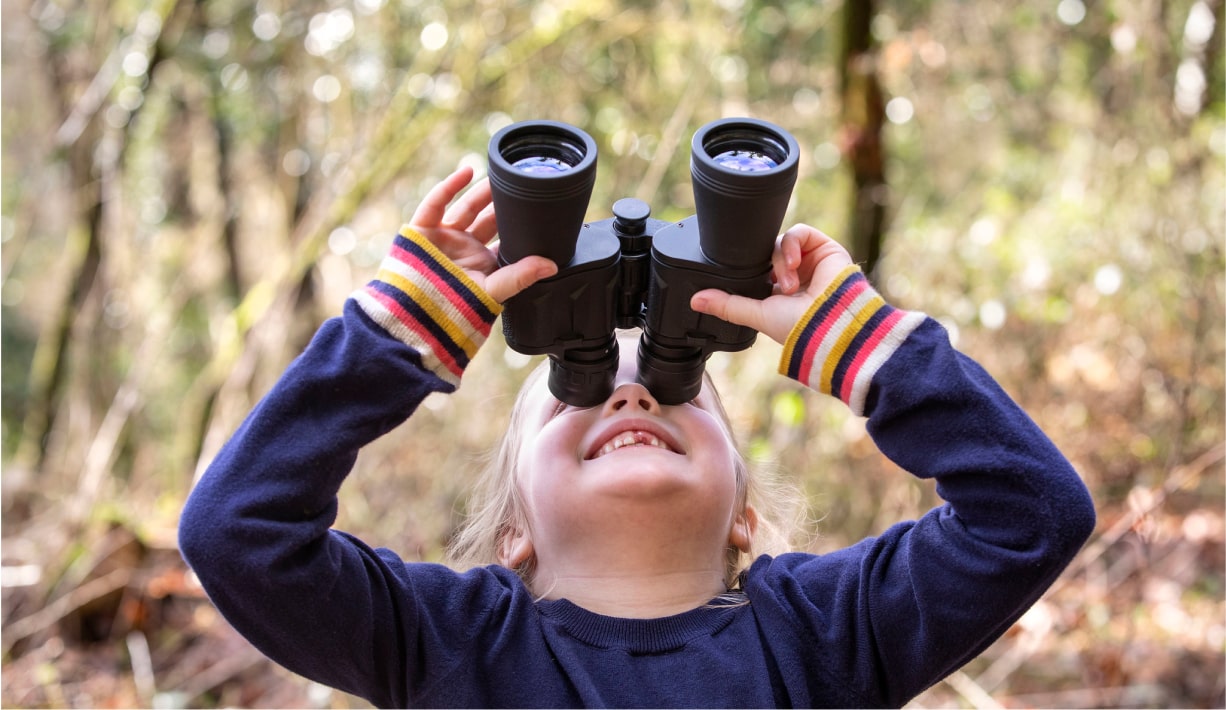
Fact 34. Go birdwatching
British wildlife is as diverse as they come. There are as many as 626 different species of birds to look out for when walking through the woods and forests of the UK. Make this a fun activity for kids, by having them write down some of their favourites, then going to explore for them. Make sure they include a mix of common and lesser-spotted birds to make it interesting.
The benefit: Similarly to starting a collection, birdwatching teaches patience and organisational skills, while also encouraging critical thinking.


Fact 35. Make pictures in the cloud
Cloud watching has been popular for generations. These fluffy white puffs of magic are as inspirational as they are beautiful. Find a nice open field to lay in, then have a child tell you what they see when looking up at the clouds. The more abstract, the better. For extra emphasis, you could ask them to write a story about the things they saw in the clouds afterwards.
The benefit: This teaches cognitive processing skills, as well as sparking creativity. It also gives a valuable lesson about the virtue of taking time to quietly sit and contemplate things.
Fact 36.Use your nose to smell things out
Go on a walk and ask kids to try and pick out what they can smell, rather than see or hear. This gives them the chance to picture the world a little differently to how they might normally. They’ll pick up on a bunch of scents, including pine, flowers, and even woodland critters. Let’s hope the less pleasant smells are at a minimum.
The benefit: This sensory-based activity will teach younger kids all about their ability to smell. While that might not sound like something which needs to be learnt, it’s wise to educate and explore all the senses with children. This is also a great way to calm anxiety for kids who are easily stressed.
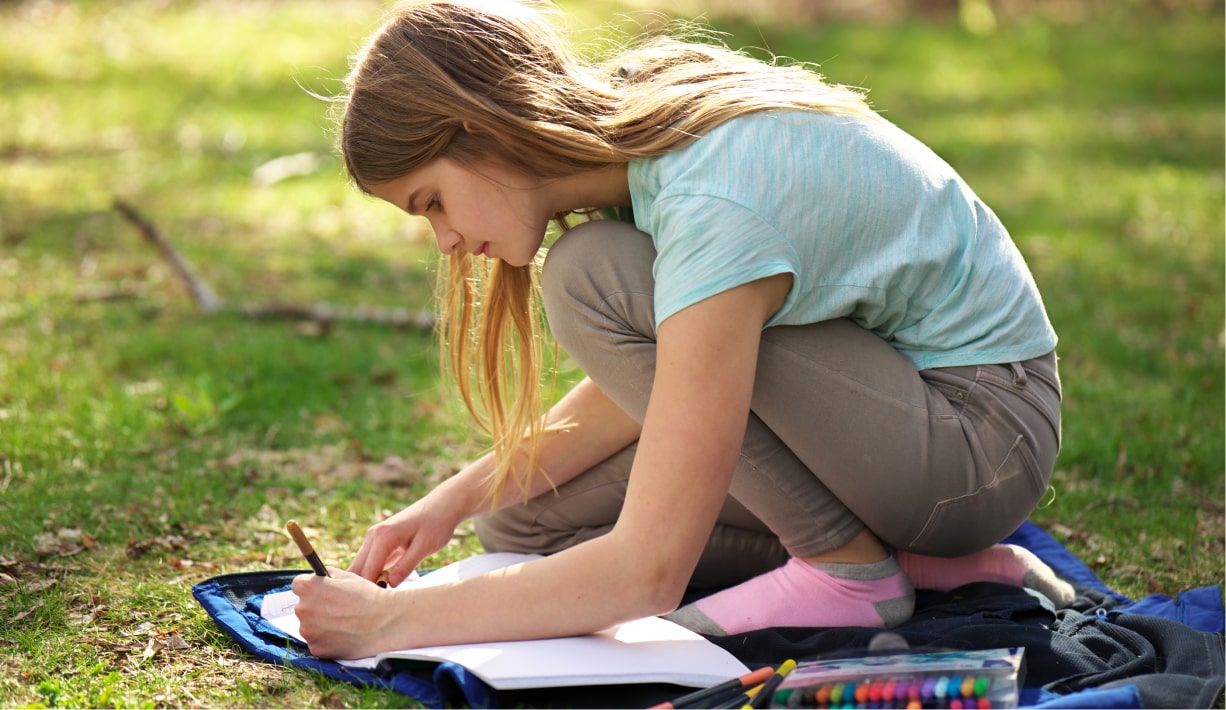
Fact 37. Create an A-to-Z list of places and things
On a piece of paper or notepad, jot down the alphabet. Then have kids explore the forest and write something which starts with each letter. This will be easy at first, but they’ll really have to wrack their brains when they get to letters like ‘x’, ‘z’, and ‘u’. Make sure to give them some handy suggestions if they’re struggling.
The benefit: Aside from teaching basic literacy skills, this gives kids the chance to explore their creative side. While most of their answers should ideally be accurate, allow for some wiggle room on the harder letters. For example a “zoo of bugs” for ‘z’ is a clever pick.
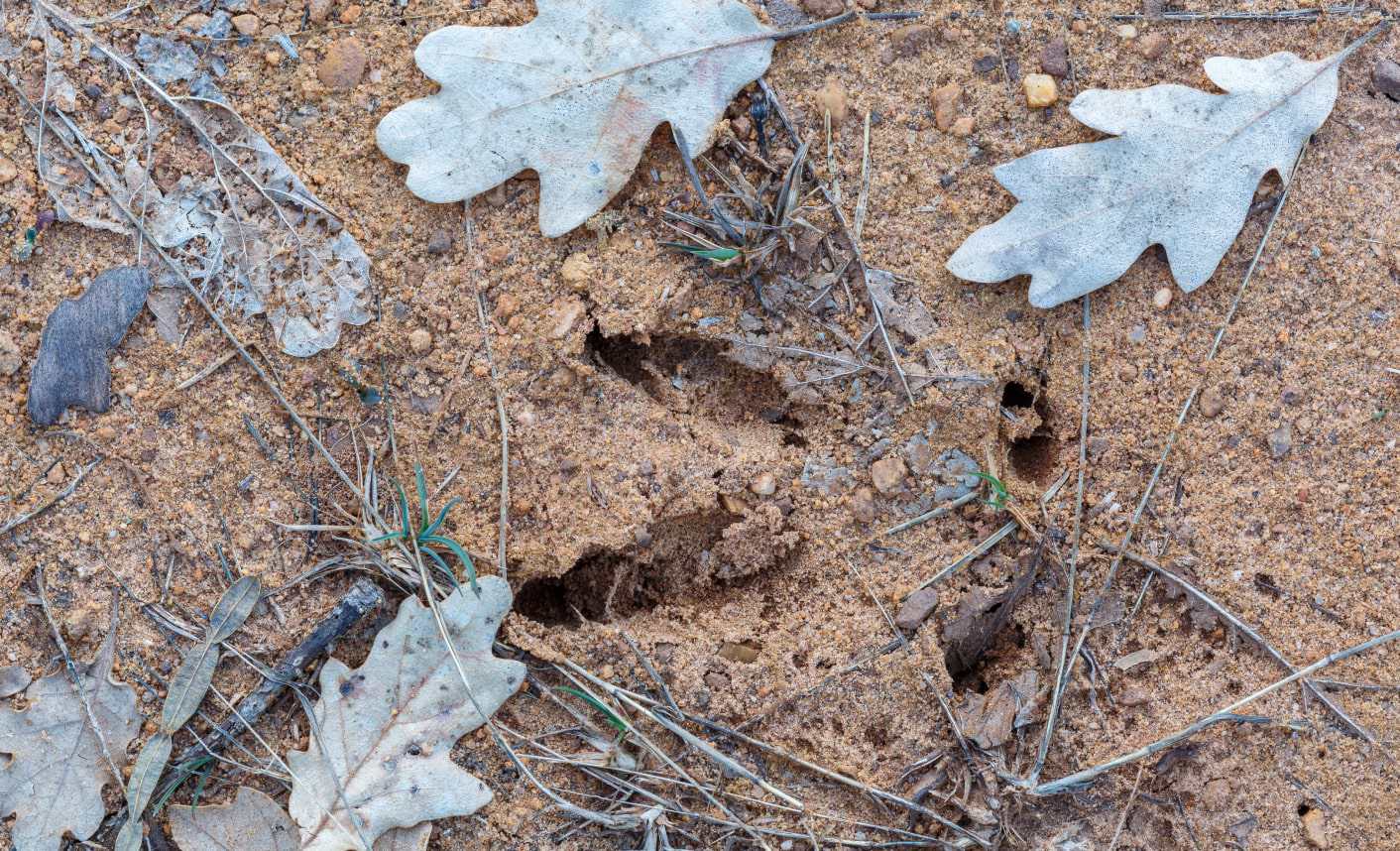

Fact 38. Make an animal track trap
Take a shallow cardboard box, and fill it a couple of inches deep with sand. Then find a secluded spot in the woods and place it on the ground. Come back to it a few hours later, and try to spot the footprints of any friendly animals which might have stumbled across your ‘trap’.
The benefit: As well as the practical skills involved in creating the track trap, kids also learn more about the natural world, as well as what kinds of creatures might be found in the wild together.
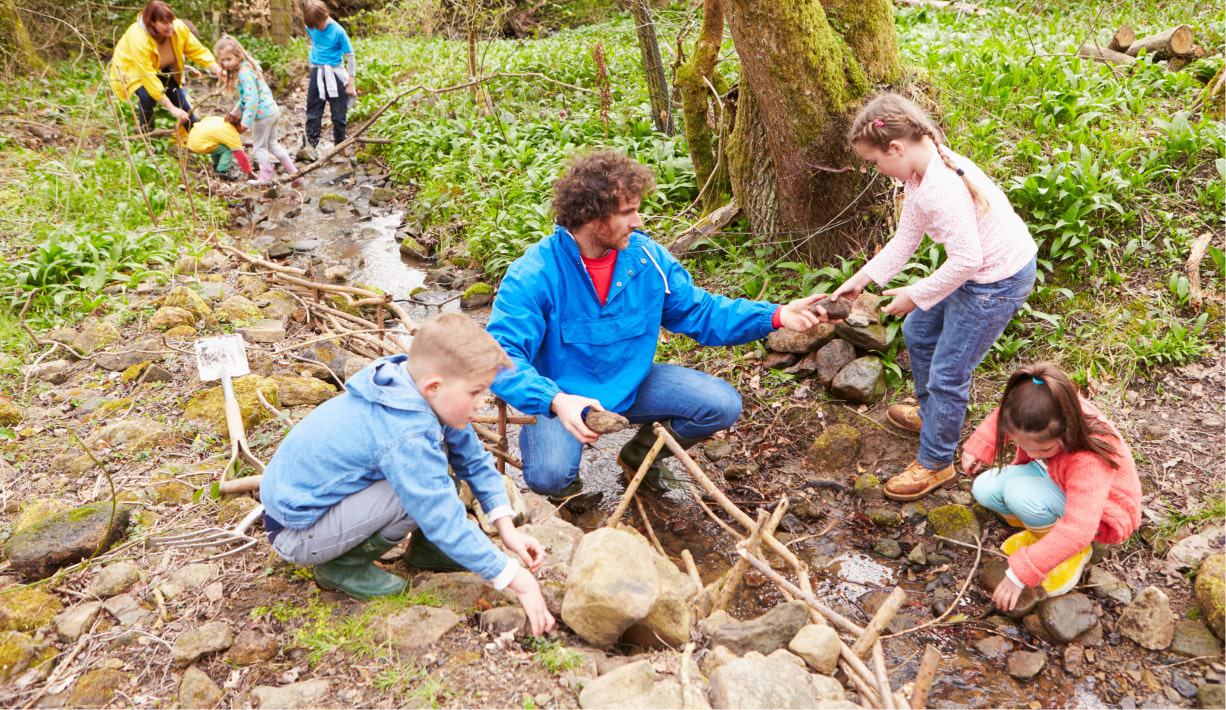
Fact 39. Create a mini-bridge for puddles
Nobody likes accidentally stepping in a puddle as they walk through the woods. Pick up rocks and sticks from the environment and fashion a makeshift bridge for people to walk over. Even if this is just for aesthetics, it’ll let any passers-by know to avoid the spot.
The benefit: Problem-solving, creativity, motor skills, and teamwork are all at the forefront of this fun activity.
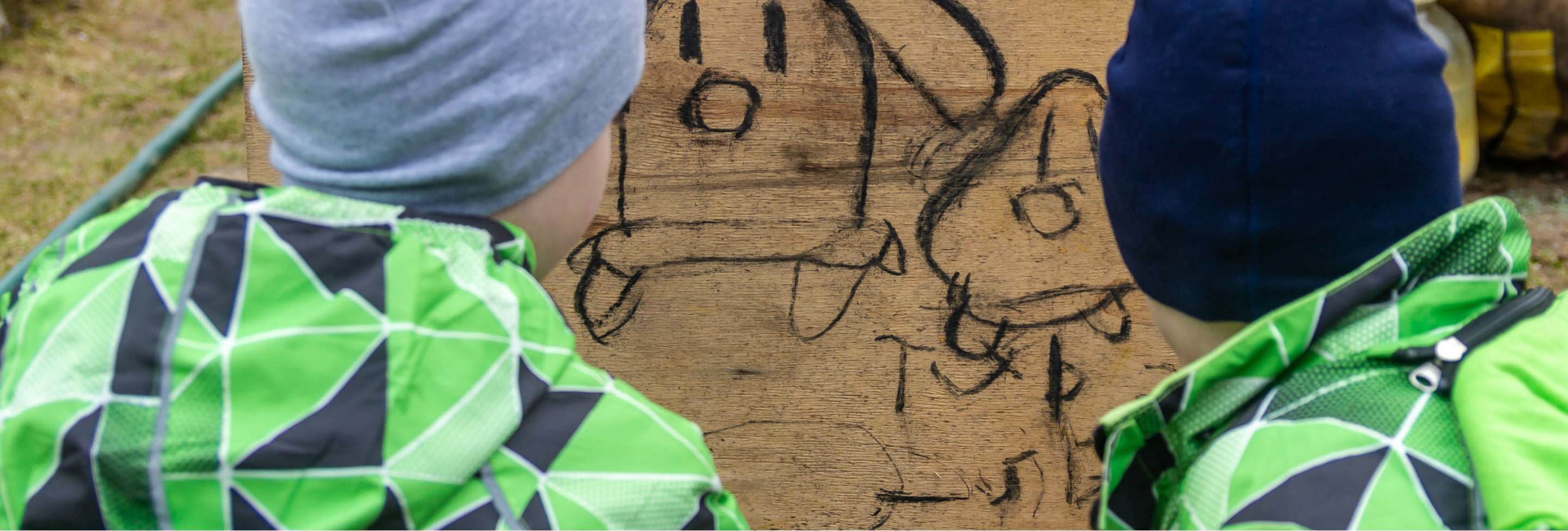
Fact 40. Make some charcoal paint
If you’re lucky enough to stumble across some charcoal on your adventures (you can also buy child-friendly options), you can use a kooky ancient technique to turn this into a fine, paste-like paint. Using a flat surface as your palette, take a rock and gently crush the charcoal. Slowly pour a little water over the substance, and mix the two together. The paste left at the end can be used to (responsibly) paint with. A gift from the past to you.
The benefit: Gross motor skills are enhanced with this one, as well as ingenuity and inventiveness. The painting aspect also allows creativity to flow.
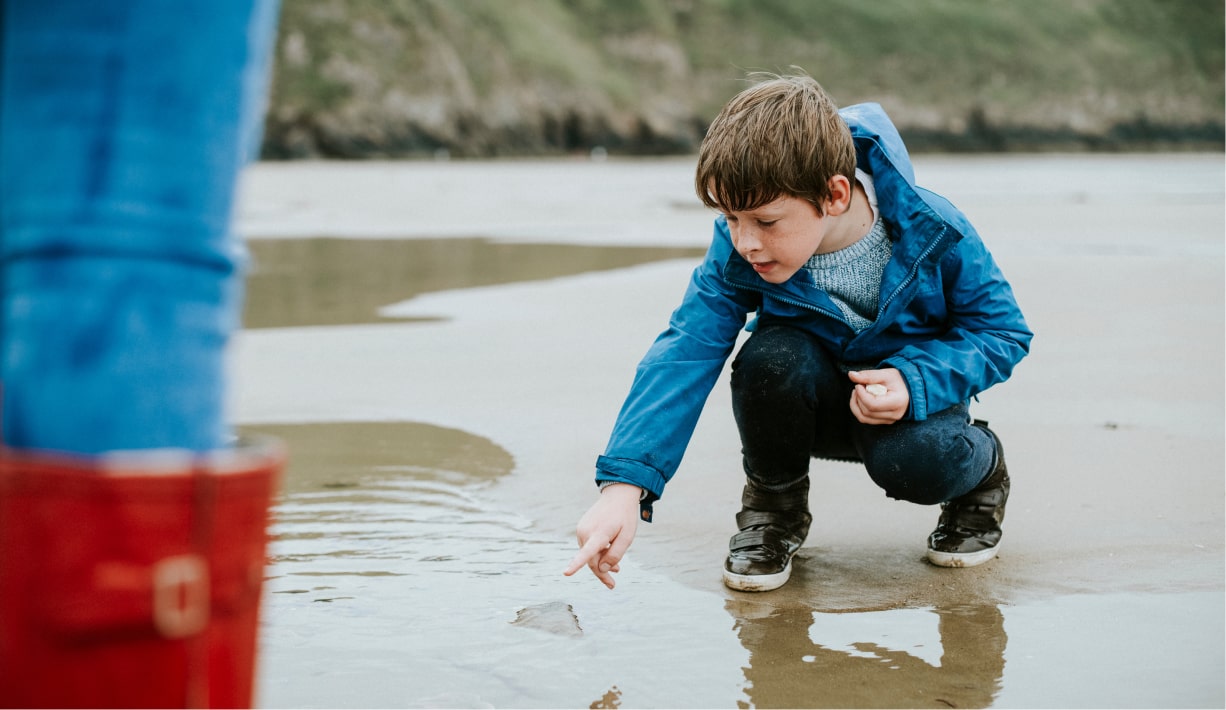
Fact 41. Explore the coast
Who says learning has to be exclusive to the woods? The coast has a heap of options which will delight, amaze, and inspire. Go snorkelling in the sea. Take a walk across a long sandy beach. Explore local wildlife by going rock pooling. The possibilities are vast.
The benefit: If a child is used to exploring woodlands, this change of scenery will give them an appreciation for a world outside of what they’re used to. There will be a number of benefits, depending on what activity you decide to pursue.
Fact 42.Do some nature-inspired creative writing
Whether they have to write about something specific to their day out, or are just doing it while sitting in the peaceful, cosy surroundings of nature, creative writing is a fantastic activity for kids to pursue. Have them read their story to you afterwards and pick out the parts you liked most.
The benefit: Aside from helping them get creative, this will build confidence in a child’s abilities. It also teaches them the value of remaining versatile. Not all work has to be done in the classroom. Writing has also been proven to boost children above the expected level for their age, with as many as 23.2% of kids in one survey found to be better than the average thanks to developing their creative writing skills.
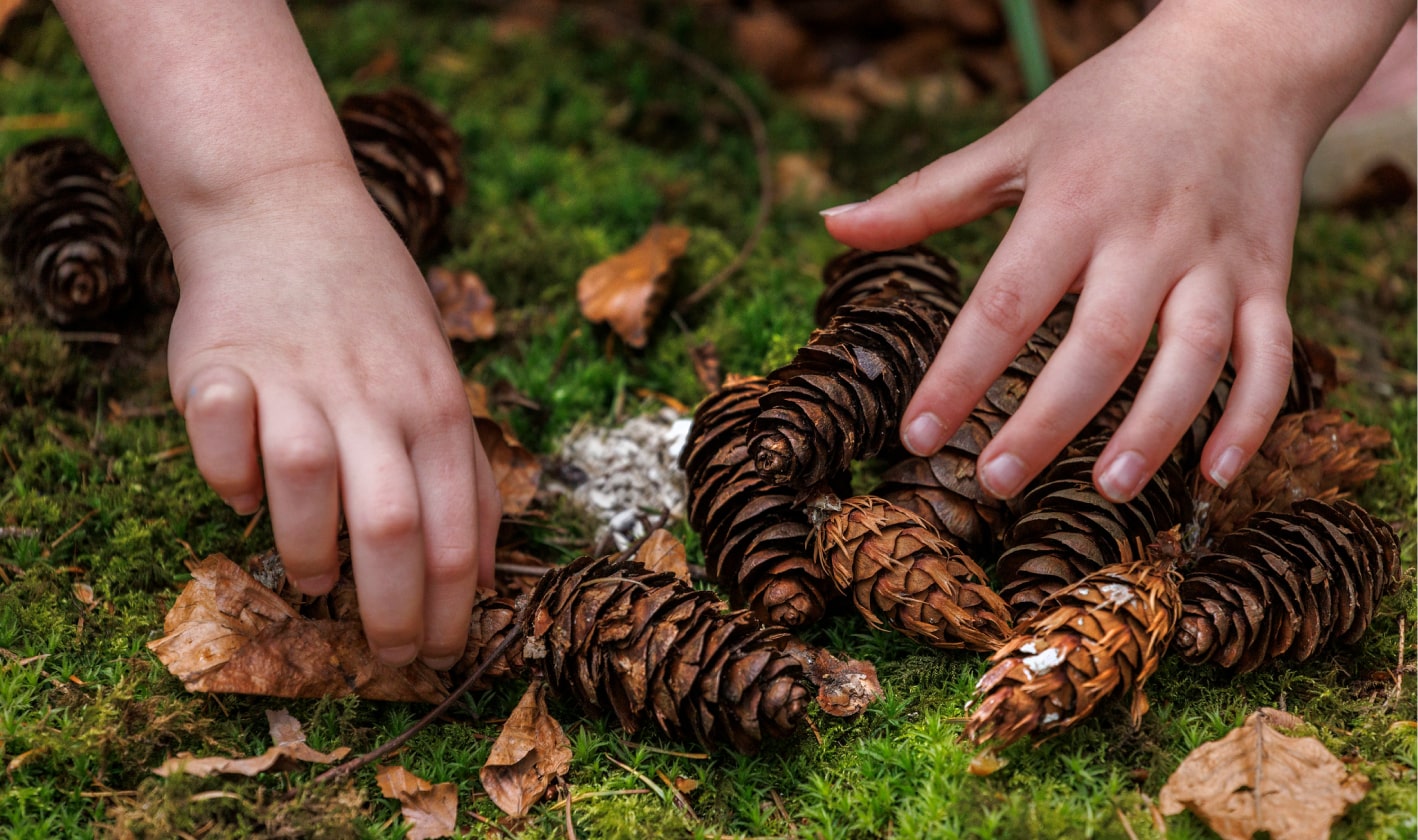

Fact 43. Make a living book
This unique idea sees kids taking materials from the environment and creating a series of panels on the ground to tell a story. Think of it like a storyboard for a film, except a little more basic (and made completely out of natural substances). If there’s a group of them, have each child make a different panel.
The benefit: Creativity is at the forefront of this one. It gives kids the chance to reinvent the world around them, while telling a story all of their own.
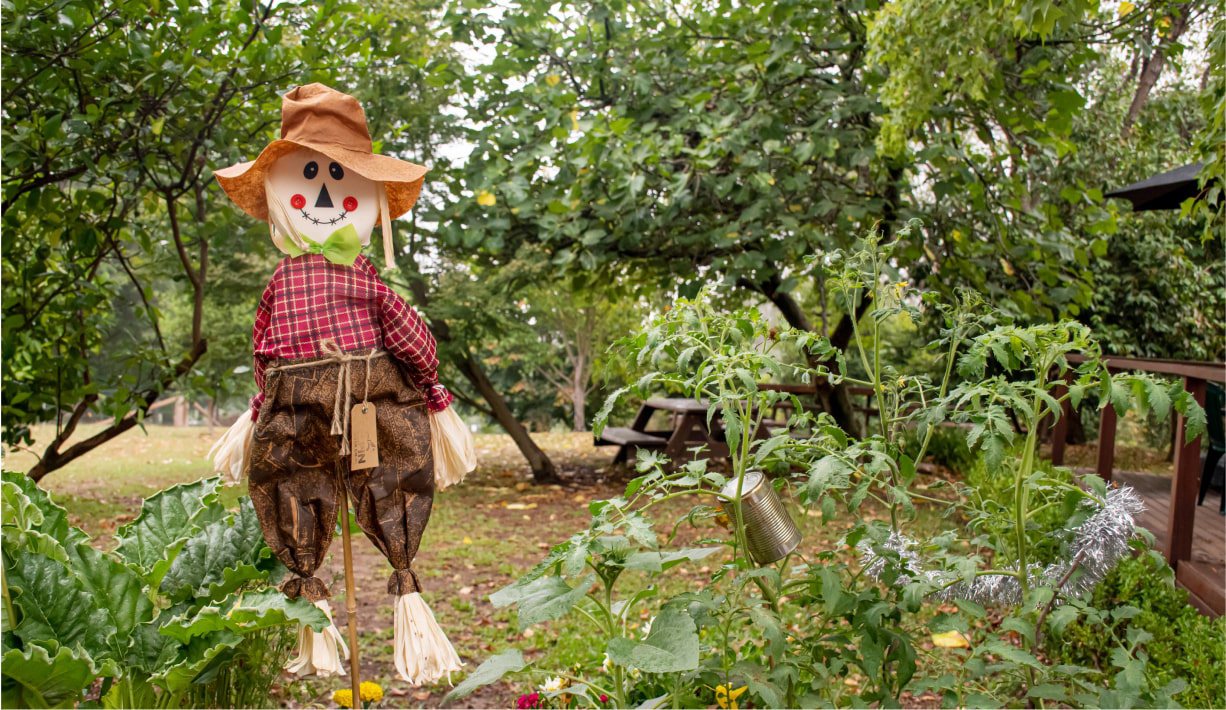
Fact 44. Build a scarecrow
While serving the practical purpose of scaring birds away from crops, these quirky characters also give kids the chance to fully indulge their creative side. Take some old shirts and trousers which nobody has any further use for, and stuff them full of straw. Also think about including a football or sack for a head. To make things easier, you can plan out what kind of scarecrow you want to create ahead of time.
The benefit: Practical skills here heightened here. A child will also be introduced to the concept of farming and crop cultivation, as long as you explain what the scarecrow is for.

Fact 45. Throw some seed bombs around
Far less aggressive than the name might suggest, seed bombs are small clumps of clay and dirt which have been fashioned together to form a ball. Taking seeds from local wildflowers, you can mix them with your ‘bombs’, then drop them as you see fit through the local landscape. Of course, the funnest way to do this is by throwing them.
The benefit: Children learn the importance of sustainable wildlife conservation. This might also be a good opportunity to explore in more detail the life cycle of a flower.
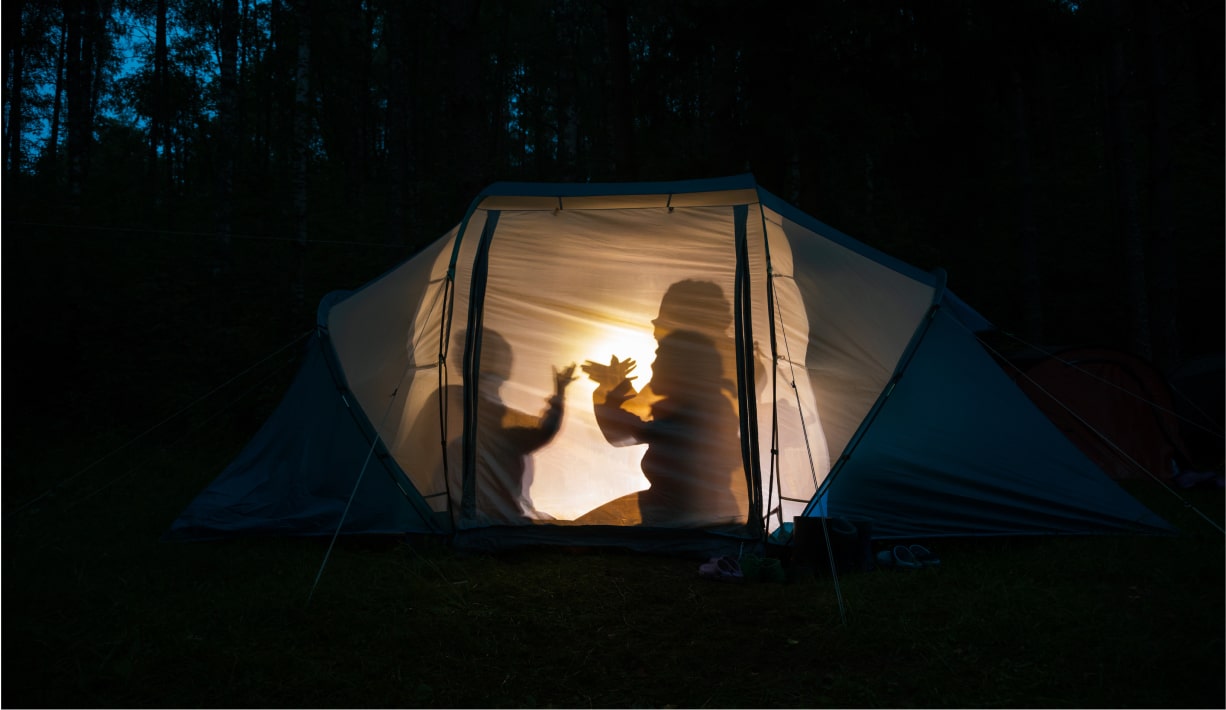
Fact 46. Create some shadow art
Have one person stand in place so that their shadow is cast out across the ground. The second uses chalk to draw the outline of the shadow. The person whose portrait it is then ‘fills in the blanks’. They can choose to make this accurate to reality or as funky as they like. Make sure to provide loads of different chalk colours for them to experiment with.
The benefit: Drawing skills are improved here, while a child’s creative side is also allowed to flow. Teamwork is also on display, as well as patience when the shadow is being drawn.


Fact 47. Go star gazing
If you’re out camping, take some time to look up and appreciate the brilliant shine of the heavens. Try to pick out constellations, and have kids chart what stars they see in the sky by drawing them. You could even make this a fun ‘join the dots’ challenge, where children do their best to make pictures out of what they’ve charted.
The benefit: This teaches kids about the cosmos in a fun, interactive way. Drawing and soft motor skills are also enhanced.
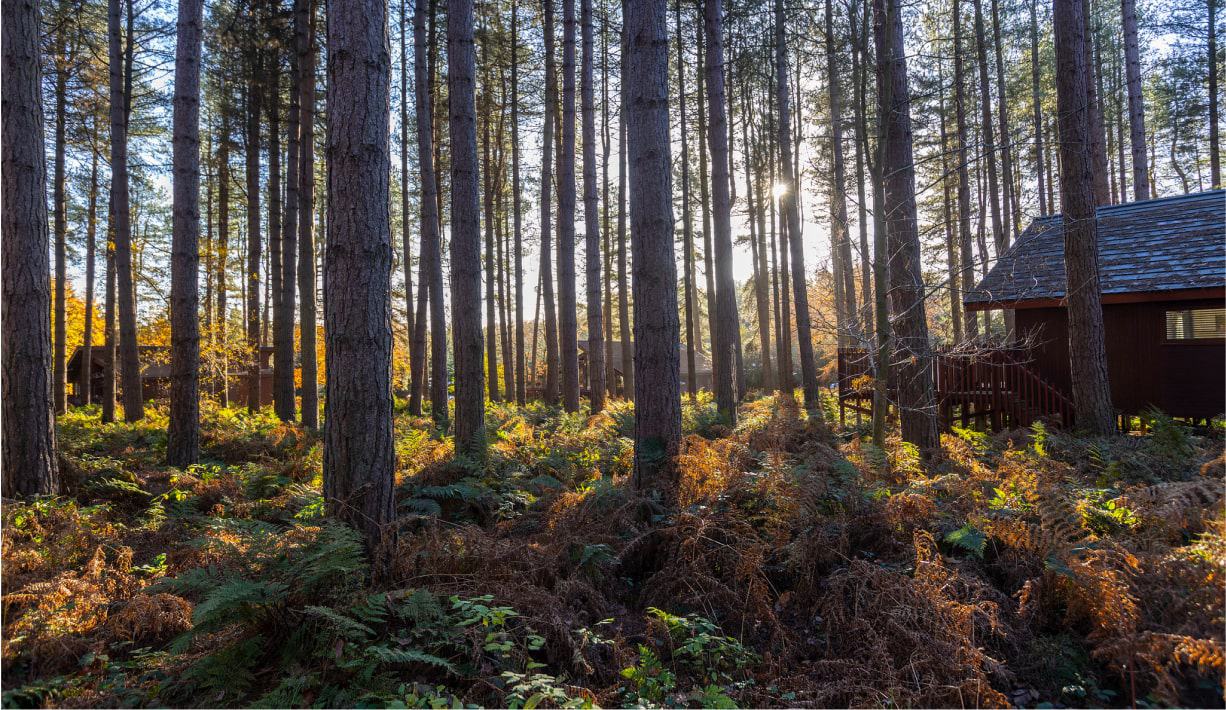
Fact 48. Create a time lapse image
You may have seen videos in the past where a scene changed over time. This shows how different environments can be affected by weather conditions, the impact of wildlife in an area, and how humans coming and going might also cause changes. A word of warning though – this is a long term project. It might make sense to try and visit the same spot once a month, rather than daily or even weekly.
The benefit: Kids learn about the impact of the world around them, and how sustainability needs to be put at the forefront of everything we do.
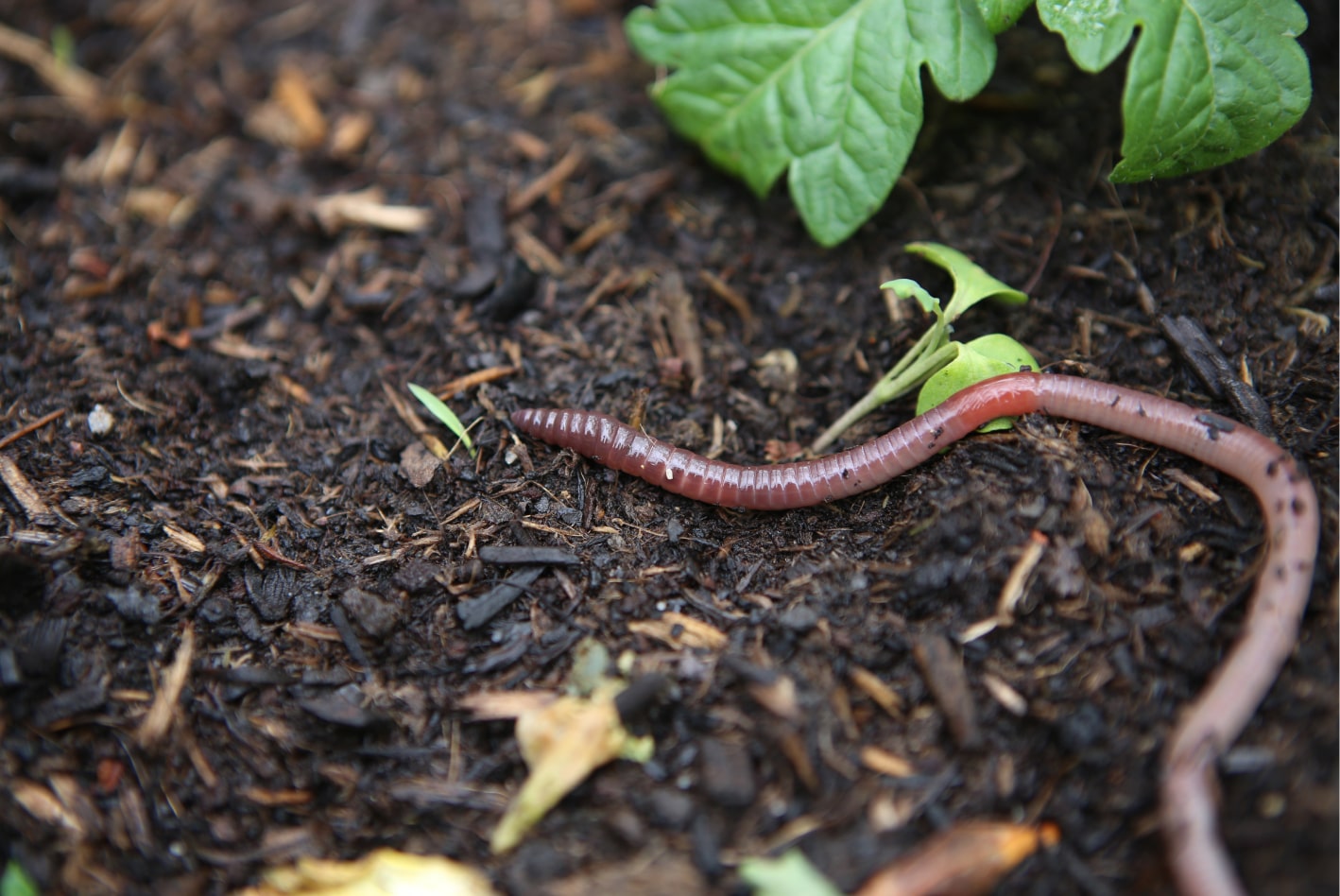

Fact 49. Go worm charming
An oldie, but a goldie. Worm charming involves gently tapping on the ground, in an attempt to try and coax worms to burrow up. Some parts of the world treat this as a competitive sport, so consider making it a competition between everyone involved. Make sure to return the worms to the soil once you’ve jotted down notes on them.
The benefit: Kids interact in a tactile way with nature when worm charming. It’s another activity which shouts about the importance of animal welfare, too. Make it clear that the worms should always be returned to their natural environment, without damaging them too much.

Fact 50. Play ‘Simon Says’
This age-old game is perfect to play in an open area of woodland. Have someone act as ‘Simon’, then have the other kids copy what they say or do. Try to encourage these actions to be woodland-related, such as “wiggle like a worm”, or “flap like a bird”.
The benefit: This teaches kids how to follow basic instructions, while also providing a basic form of exercise.
Useful Links
We’ve explored a lot in this guide. Hopefully you have loads of inventive ways to get kids outside, developing their core skills. If you’d like to do some further reading, or are looking for even more inspiration, be sure to browse our handy list of secondary resources.